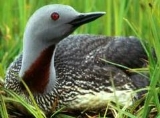
List of non-passerine birds of Korea
Encyclopedia
This is a list of all non-passerine
birds ever found in the wild in Korea
, including the Korean Peninsula
and islands.
Loon
Order: Gaviiformes
Family: Gaviidae
The Loons migrate to Korea during the winter months. They are carnivores and some species can dive more than 200 feet below the surface of the water to search for food.
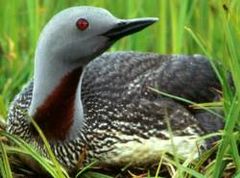
Family: Podicipedidae
Grebes are small to medium-large in size, have lobed toes, and are excellent swimmers and divers. However, they have their feet placed far back on the body, making them quite ungainly on land. They leave the water only to nest, walking very short distances upright like penguins. They can run for a short distance, but often fall over.
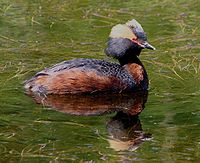
Albatross
Order: Procellariidae
Family: Diomedeidae
Once common, it was brought to the edge of extinction by the trade in feathers, but with protection has recently made a recovery. Their main diet consists of squid, however they are known to follow fishing vessels for the left over morsels.

Family: Procellariidae
The family Procellariidae is the main radiation of medium-sized 'true petrels', characterised by united nostrils with medium septum, and a long outer functional primary. It is dominant in the Southern Oceans, but not so in the Northern Hemisphere.

Family: Hydrobatidae
It breeds on islands in the northwest Pacific off China, Japan and Korea. It nests in colonies close to the sea in rock crevices and lays a single white egg. It spends the rest of the year at sea, ranging into the Indian Ocean and Arabian Sea.It is essentially dark brown in all plumages, and has a fluttering flight, pattering on the water surface as it picks planktonic food items from the ocean surface.
Pelican
Order: Pelecaniformes
Family: Pelecanidae
These large birds use their elastic pouches to catch fish—though different species use it in different ways. Many pelicans fish by swimming in cooperative groups. They may form a line or a "U" shape and drive fish into shallow water by beating their wings on the surface.

Family: Sulidae
This group comprises of medium-to-large coastal sea-birds that plunge-dive for fish.
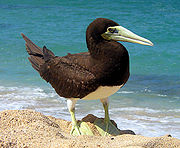
Cormorant
Order: Pelecaniformes
Family: Phalacrocoracidae
The Phalacrocoracidae is a family of medium-to-large coastal, fish-eating sea-birds that includes cormorants and shags. Plumage colouration varies with the majority having mainly dark plumage, some species being black and white, and a few being colourful. There are 38 species worldwide and 4 species which occur in Korea.

Frigatebird
Order: Pelecaniformes
Family: Fregatidae
Frigate birds are built for flying; they rarely swim and cannot walk but can manage to climb around the trees and bushes in which they nest. They have a very light skeleton and long narrow wings and are masters of the air.
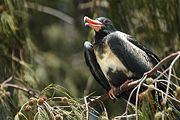
Family: Ardeidae
Large wading birds found in most temperate regions but most numerous in tropical and subtropical areas. Most herons roost and nest in large colonies called heronries; others are gregarious only at breeding time; and some are entirely solitary.
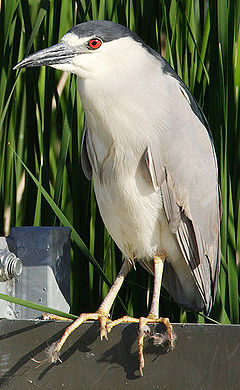
Family: Ciconiidae
The storks are large, long-legged, long-necked wading birds with long stout bills. They occur in most of the warmer regions of the world. They tend to live in drier habitats than their relatives the herons, spoonbills and Ibises, and lack the powder down that those groups use to clean off fish slime. Many species are migratory. Storks eat frogs, fish and small birds or mammals
.jpg)
Ibis
Order: Ciconiiformes
Family: Threskiornithidae
Ibises and Spoonbills occur primarily in freshwater and estuarine habitats, including swamps, marshes, coastal mangroves, rice fields, rivers and ponds. Ibises and spoonbills are widely distributed in the warmer regions of the world and are especially abundant in the tropics of Africa, Asia and South America.

Duck
Order: Anseriformes
Family: Anatidae
The family Anatidae includes the ducks and most duck-like waterfowl, such as geese and swans. These are birds that are modified for an aquatic existence with webbed feet, bills which are flattened to a greater or lesser extent, and feathers that are excellent at shedding water due to special oils. There are 131 species worldwide.
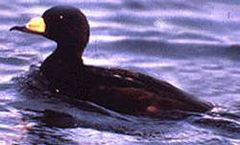
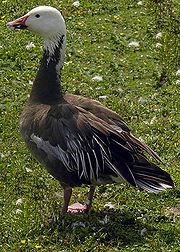

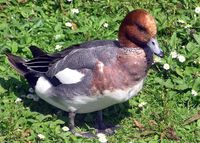
Osprey
Order: Falconiformes
Family: Pandionidae
The Osprey (Pandion haliaetus) is a medium large raptor which is a specialist fish-eater with a worldwide distribution. The Osprey (Pandion haliaetus) is a medium large raptor which is a specialist fish-eater with a worldwide distribution. The Osprey is particularly well adapted to its diet, with reversible outer toes, closable nostrils to keep out water during dives, and backwards facing scales on the talons which act as barbs to help catch fish. It locates its prey from the air, often hovering prior to plunging feet-first into the water to seize a fish.
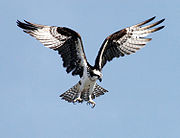 Osprey
Osprey
Pandion haliaetus
Hawk
Order: Falconiformes
Family: Accipitridae
From the Accipitridae
family, they range from small to large birds with strongly hooked bills and variable morphology based on diet. They feed on a range of prey items from insects to medium-sized mammals, with a number feeding on carrion


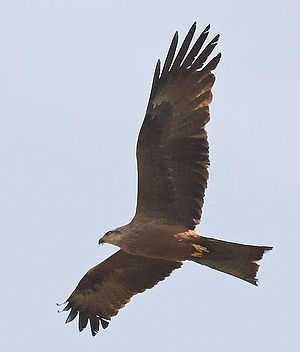
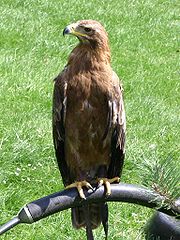
Family: Falconidae
Falcons have thin, pointed wings, which allow them to dive at extremely high speeds. (Peregrine Falcons, the fastest animals on Earth, are said to have reached speeds of up to 200 mph.)

Pheasant
Order: Galliformes
Family: Phasianidae
The Phasianidae is a family of birds which consists of the pheasants and their allies; the grouse are sometimes considered to make up a separate family, the Tetraonidae. These are terrestrial species, variable in size but generally plump, with broad relatively short wings. Many species are gamebirds, or have been domesticated as a food source for humans. There are 180 species world wide and 4 species in Korea.

Buttonquail
Order: Turniciformes
Family: Turnicidae
The buttonquails or hemipodes are a small family of birds which resemble, but are unrelated to, the true quails. This is an Old World group, which inhabits warm grasslands. Buttonquail are small drab running birds, which avoid flying. The female is the brighter of the sexes, and initiates courtship. The male incubates the eggs and tends the young. There are 15 species worldwide, with 1 species in Korea.
Yellow-legged Buttonquail
Turnix tanki
Cranes
Order: Gruiformes
Family: Gruidae
Cranes are large, long-legged and long-necked birds. Unlike the similar-looking but unrelated herons, cranes fly with necks outstretched, not pulled back. Most have elaborate and noisy courting displays or "dances". There are 15 species worldwide, 7 Korean species.

Family: Rallidae
Rallidae is a large family of small to medium-sized birds, including rails, crakes, coots, and gallinules. The most typical family members occupy dense vegetation in damp environments near lakes, swamps, or rivers. In general they are shy and secretive birds, and thus difficult to observe. Most species have strong legs, and have long toes which are well adapted to soft, uneven surfaces. They tend to have short, rounded wings and be weak fliers. There are 143 species world wide and 9 Korean species.

.jpg)
Family: Otididae
Bustards, including floricans and korhaans, are large terrestrial birds mainly associated with dry open country and steppes in the Old World. They make up the family Otididae (formerly known as Otidae). Bustards are all fairly large and two species, the Kori Bustard and the Great Bustards are frequently cited as the world's heaviest flying birds, since both may exceed 20 kg (44 lbs).
 Great Bustard
Great Bustard
Otis tarda
Family: Jacanidae
Jacanas are identifiable by their huge feet and claws which enable them to walk on floating vegetation in the shallow lakes that are their preferred habitat. The females are larger than the males, and some species are polyandrous
. However, adults of both sexes look identical, as with most shorebirds. They feed on insect
s and other invertebrate
s picked from the floating vegetation or the water’s surface. Most species are sedentary, but the Pheasant-tailed Jacana migrates
from the north of its range into peninsular India
and southeast Asia
. It is the only one of the world's 8 jacana species found in Korea.
Pheasant-tailed Jacana
Hydrophasianus chirurgus
Family: Rostratulidae
Painted snipes are short-legged, long-billed bird
s similar in shape to the true snipe
s, but much more brightly coloured. The female is brighter than the male and takes the lead in courtship. The male incubates the egg
s, usually four, in a nest on the ground or floating for about 20 days. All three species live in reedy swamp
s, and their diet consists of annelid
worms and other invertebrate
s, which they find with their long bills. There are 3 species worldwide, of which only one is recorded from Korea.
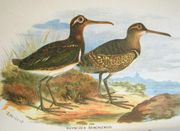 Greater Painted-snipe Rostratula benghalensis
Greater Painted-snipe Rostratula benghalensis
Family: Haematopodidae
The oystercatchers are large, obvious and noisy plover
-like bird
s, with strong bills used for smashing or prising open molluscs. There are 11 species worldwide and 1 Korean species.
Eurasian Oystercatcher
Haematopus ostralegus
Stilt
Order: Charadriiformes
Family: Recurvirostridae
Recurvirostridae is a family of large wading birds, which includes the avocets and the stilts. The avocets have long legs and long up-curved bills. The stilts have extremely long legs and long, thin, straight bills. There are 9 species worldwide and 2 Korean species.

Family: Glareolidae
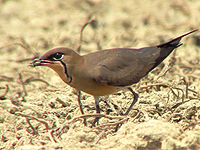 Oriental Pratincole
Oriental Pratincole
Glareola maldivarum
Plover
Order: Charadriiformes
Family: Charadriidae
The family Charadriidae includes the plovers, dotterels, and lapwings. They are small to medium-sized birds with compact bodies, short, thick necks and long, usually pointed, wings. They are found in open country worldwide, mostly in habitats near water, although there are some exceptions. There are 66 species worldwide and 12 Korean species, of which 3 breed in Korea.
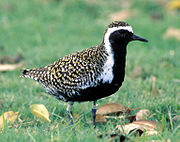

Wader
Order: Charadriiformes
Family: Scolopacidae
The Scolopacidae are a large diverse family of small to medium sized shorebirds including the Sandpipers, Curlews, Godwits, Shanks, Tattlers, Woodcocks, Snipes, Dowitchers and Phalaropes. The majority of species eat small invertebrates picked out of the mud or soil. Different lengths of legs and bills enable different species to feed in the same habitat, particularly on the coast, without direct competition for food. There are 86 species world wide and 45 Korean species.
.jpg)
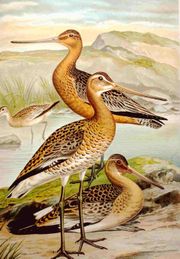

.jpg)
Skua
Order: Charadriiformes
Family: Laridae
There are 91 species worldwide, and 23 species in Korea.

.jpg)


Family: Alcidae
An auk is a bird of the family Alcidae in the order Charadriiformes. Auks are superficially similar to penguins due to their black-and-white colours, their upright posture and some of their habits. Nevertheless they are not closely related to penguins, but rather are believed to be an example of moderate convergent evolution.There are 22 species worldwide, with 8 found in Korea.
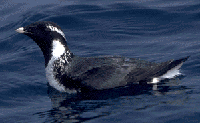
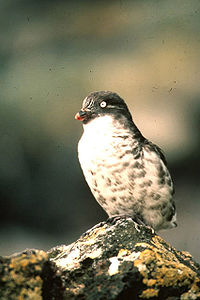
Family: Pteroclididae
Sandgrouse have small, pigeon like heads and necks, but sturdy compact bodies. They have long pointed wings and sometimes tails and a fast direct flight. Flocks fly to watering holes at dawn and dusk. They are restricted to treeless open country in the Old World, such as plains and semi-deserts. Legs are feathered down to the toes, and genus Syrrhaptes
has the toes feathered as well. There are 16 species worldwide, with one species in Korea.

Pigeons and dove
Order: Columbiformes
Family: Columbidae
Pigeons and doves are stout-bodied birds with short necks and short slender bills with a fleshy cere. There are 308 species world wide and 7 Korean species.

Cuckoo
Order: Cuculiformes
Family: Cuculidae
The cuckoos are generally medium sized slender birds. The majority are arboreal, with a sizeable minority that are terrestrial. The family has a cosmopolitan distribution, with the majority of species being tropical. The temperate species are migratory. The cuckoos feed on insects, insect larvae and a variety of other animals, as well as fruit. Many species are brood parasites, laying their eggs in the nests of other species, but the majority of species raise their own young.
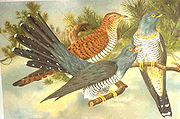
Owls
Order: Strigiformes
Family: Strigidae
Owls are solitary nocturnal birds of prey. They have large forward-facing eyes and ears, a hawk-like beak, and a conspicuous circle of feathers around each eye called a facial disk. There are 195 species world wide and 11 Korean species.
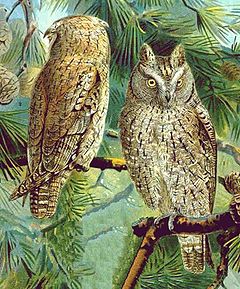
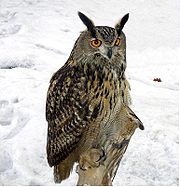
Family: Caprimulgidae
Nightjars are medium-sized nocturnal birds with long wings, short legs and very short bills that usually nest on the ground. Most have small feet, of little use for walking, and long pointed wings. Their soft plumage is crypically coloured to resemble bark or leaves. There are 86 species worldwide and 1 Korean species.
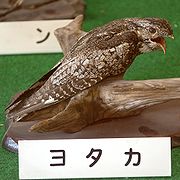
Swift
Order: Apodiformes
Family: Apodidae
The swifts are small aerial birds, spending the majority of their lives flying. These birds have very short legs and never settle voluntarily on the ground, perching instead only on vertical surfaces. Many swifts have long swept-back wings that resemble a crescent or a boomerang. There are 98 species world wide and 3 Korean species.
Hoopoe
Order: Upupiformes
Family: Upupidae
There is only one species of hoopoe worldwide. Hoopoes are widespread in Europe
, Asia
and North Africa
, as well as Sub-Saharan Africa and Madagascar. They migrate
from all but the southernmost part of their range to the tropics in winter. Their habitat is open cultivated ground with short grass or bare patches. They spend much time on the ground hunting insect
s and worm
s.
Family: Coraciidae
Rollers are insect eaters, usually catching their prey in the air. They often perch prominently whilst hunting, like giant shrike
s. They resemble crow
s in size and build, but are more closely related to the kingfisher
s and bee-eater
s. They share the colourful appearance of those groups, blues and browns predominating. The two inner front toes are connected, but not the outer one. There are twelve species worldwide, but only one is found in Korea.
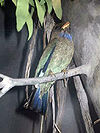
Family: Alcedinidae
The river kingfishers are one of the three families
of bird
in the kingfisher
group.

Family: Cerylidae
These are all specialist fish-eating species, unlike many representatives of the other two families, and it is likely that they are all descended from fish-eating kingfishers which founded populations in the New World. It was believed that the entire group evolved in the Americas, but this seems not to be true. The original ancestor possibly evolved in Africa - at any rate in the Old World - and the Chloroceryle species are the youngest ones.
Family: Picidae
Woodpeckers are small to medium sized birds with chisel like beaks, short legs, stiff tails and long tongues used for capturing insects. Some species have feet with two toes pointing forward, and two backward, while several species have only three toes. Many woodpeckers have the habit of tapping noisily on tree trunks with their beaks. There are more than 200 species worldwide, and 11 species in Korea.
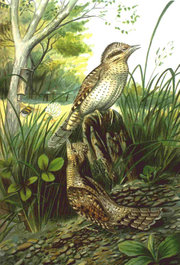
.jpg)
Passerine
A passerine is a bird of the order Passeriformes, which includes more than half of all bird species. Sometimes known as perching birds or, less accurately, as songbirds, the passerines form one of the most diverse terrestrial vertebrate orders: with over 5,000 identified species, it has roughly...
birds ever found in the wild in Korea
Korea
Korea ) is an East Asian geographic region that is currently divided into two separate sovereign states — North Korea and South Korea. Located on the Korean Peninsula, Korea is bordered by the People's Republic of China to the northwest, Russia to the northeast, and is separated from Japan to the...
, including the Korean Peninsula
Korean Peninsula
The Korean Peninsula is a peninsula in East Asia. It extends southwards for about 684 miles from continental Asia into the Pacific Ocean and is surrounded by the Sea of Japan to the south, and the Yellow Sea to the west, the Korea Strait connecting the first two bodies of water.Until the end of...
and islands.
LoonLoonThe loons or divers are a group of aquatic birds found in many parts of North America and northern Eurasia...
s
Order: GaviiformesGaviiformes
Gaviiformes is an order of aquatic birds containing the loons or divers and their closest extinct relatives. Modern gaviiformes are found in many parts of North America and northern Eurasia , though prehistoric species were more widespread.-Classification and evolution:There are five living...
Family: Gaviidae
The Loons migrate to Korea during the winter months. They are carnivores and some species can dive more than 200 feet below the surface of the water to search for food.

- Red-throated LoonGavia stellata
- Arctic Loon Gavia arctica
- Pacific LoonGavia pacifica' '
- Yellow-billed LoonYellow-billed LoonThe Yellow-billed Loon , also known as the White-billed Diver, is the largest member of the loon or diver family. Breeding adults have a black head, white underparts and chequered black-and-white mantle. Non-breeding plumage is drabber with the chin and foreneck white...
Gavia adamsii' '
Grebes
Order: PodicipediformesFamily: Podicipedidae
Grebes are small to medium-large in size, have lobed toes, and are excellent swimmers and divers. However, they have their feet placed far back on the body, making them quite ungainly on land. They leave the water only to nest, walking very short distances upright like penguins. They can run for a short distance, but often fall over.

- Little GrebeLittle GrebeThe Little Grebe , also known as Dabchick, member of the grebe family of water birds. At 23 to 29 cm in length it is the smallest European member of its family. It is commonly found in open bodies of water across most of its range.-Description:The Little Grebe is a small water bird with a pointed...
Tachybaptus ruficollis - Red-necked GrebeRed-necked GrebeThe Red-necked Grebe is a migratory aquatic bird found in the temperate regions of the northern hemisphere. Its wintering habitat is largely restricted to calm waters just beyond the waves around ocean coasts, although some birds may winter on large lakes...
Podiceps grisegena - Great Crested GrebeGreat Crested GrebeThe Great Crested Grebe is a member of the grebe family of water birds.- Description :The Great Crested Grebe is long with a wingspan. It is an excellent swimmer and diver, and pursues its fish prey underwater. The adults are unmistakable in summer with head and neck decorations...
Podiceps cristatus - Horned Grebe Podiceps auritus
- Black-necked GrebeBlack-necked GrebeThe Black-necked Grebe, Podiceps nigricollis, known in North America as the Eared Grebe, is a member of the grebe family of water birds. It occurs on every continent except Australia and Antarctica.-Taxonomy:There are three subspecies:*P. n...
Podiceps nigricollis
AlbatrossAlbatrossAlbatrosses, of the biological family Diomedeidae, are large seabirds allied to the procellariids, storm-petrels and diving-petrels in the order Procellariiformes . They range widely in the Southern Ocean and the North Pacific...
es
Order: ProcellariidaeProcellariidae
The family Procellariidae is a group of seabirds that comprises the fulmarine petrels, the gadfly petrels, the prions, and the shearwaters. This family is part of the bird order Procellariiformes , which also includes the albatrosses, the storm-petrels, and the diving petrels.The procellariids are...
Family: Diomedeidae
Once common, it was brought to the edge of extinction by the trade in feathers, but with protection has recently made a recovery. Their main diet consists of squid, however they are known to follow fishing vessels for the left over morsels.

- Short-tailed AlbatrossShort-tailed AlbatrossThe Short-tailed Albatross or Steller's Albatross, Phoebastria albatrus, is a large rare seabird from the North Pacific. Although related to the other North Pacific albatrosses, it also exhibits behavioural and morphological links to the albatrosses of the Southern Ocean...
Phoebastria albatrus
Petrels and shearwaters
Order: ProcellariiformesProcellariiformes
Procellariiformes is an order of seabirds that comprises four families: the albatrosses, petrels and shearwaters, storm petrels, and diving petrels...
Family: Procellariidae
Procellariidae
The family Procellariidae is a group of seabirds that comprises the fulmarine petrels, the gadfly petrels, the prions, and the shearwaters. This family is part of the bird order Procellariiformes , which also includes the albatrosses, the storm-petrels, and the diving petrels.The procellariids are...
The family Procellariidae is the main radiation of medium-sized 'true petrels', characterised by united nostrils with medium septum, and a long outer functional primary. It is dominant in the Southern Oceans, but not so in the Northern Hemisphere.

- Streaked ShearwaterStreaked ShearwaterThe Streaked Shearwater, Calonectris leucomelas is a species of seabird. The bird is 48 cm in size, with a 122 cm wingspan. This species is pelagic, but also occurs in inshore waters. It occurs in the Pacific Ocean, nesting in Japan and many of its offshore islands. After breeding, the Streaked...
Calonectris leucomelas - Flesh-footed ShearwaterFlesh-footed ShearwaterThe Flesh-footed Shearwater, Puffinus carneipes, is a small shearwater. Its plumage is black. It has pale pinkish feet, and a pale bill with a black tip. Together with the equally light-billed Pink-footed Shearwater, it forms the Hemipuffinus group, a superspecies which may or may not have an...
Puffinus carneipes - Short-tailed ShearwaterShort-tailed ShearwaterThe Short-tailed Shearwater or Slender-billed Shearwater , also called Yolla or Moonbird, and commonly known as the muttonbird in Australia, is the most abundant seabird species in Australian waters, and is one of the few Australian native birds in which the chicks are commercially harvested...
Puffinus tenuirostris - Bonin PetrelBonin PetrelThe Bonin Petrel, Pterodroma hypoleuca, is a seabird in the family Procellariidae. It is a small gadfly petrel that lives in the waters of the north west Pacific and nests on islands south of Japan and in the Northwestern Hawaiian Islands...
Pterodroma hypoleuca
Storm Petrels
Order: ProcellariidaeProcellariidae
The family Procellariidae is a group of seabirds that comprises the fulmarine petrels, the gadfly petrels, the prions, and the shearwaters. This family is part of the bird order Procellariiformes , which also includes the albatrosses, the storm-petrels, and the diving petrels.The procellariids are...
Family: Hydrobatidae
It breeds on islands in the northwest Pacific off China, Japan and Korea. It nests in colonies close to the sea in rock crevices and lays a single white egg. It spends the rest of the year at sea, ranging into the Indian Ocean and Arabian Sea.It is essentially dark brown in all plumages, and has a fluttering flight, pattering on the water surface as it picks planktonic food items from the ocean surface.
- Swinhoe's Storm-PetrelSwinhoe's Storm-petrelSwinhoe's Storm Petrel, Oceanodroma monorhis also known as Swinhoe's Petrel is a small seabird of the storm-petrel family Hydrobatidae....
Oceanodroma monorhis
PelicanPelicanA pelican, derived from the Greek word πελεκυς pelekys is a large water bird with a large throat pouch, belonging to the bird family Pelecanidae....
s
Order: PelecaniformesPelecaniformes
The Pelecaniformes is a order of medium-sized and large waterbirds found worldwide. As traditionally—but erroneously—defined, they encompass all birds that have feet with all four toes webbed. Hence, they were formerly also known by such names as totipalmates or steganopodes...
Family: Pelecanidae
These large birds use their elastic pouches to catch fish—though different species use it in different ways. Many pelicans fish by swimming in cooperative groups. They may form a line or a "U" shape and drive fish into shallow water by beating their wings on the surface.

- Spot-billed PelicanSpot-billed PelicanThe Spot-billed Pelican or Grey Pelican is a member of the pelican family. It breeds in southern Asia from southern Pakistan across India east to Indonesia. It is a bird of large inland and coastal waters, especially large lakes...
Pelecanus philippensis - Dalmatian PelicanDalmatian PelicanThe Dalmatian Pelican is a member of the pelican family. It breeds from southeastern Europe to India and China in swamps and shallow lakes. The nest is a crude heap of vegetation....
Pelecanus crispus
Boobies
Order: PelecaniformesPelecaniformes
The Pelecaniformes is a order of medium-sized and large waterbirds found worldwide. As traditionally—but erroneously—defined, they encompass all birds that have feet with all four toes webbed. Hence, they were formerly also known by such names as totipalmates or steganopodes...
Family: Sulidae
Sulidae
The bird family Sulidae comprises the gannets and boobies. Collectively called sulidas, they are medium-large coastal seabirds that plunge-dive for fish and similar prey. The ten species in this family are often considered congeneric in older sources, placing all in the genus Sula...
This group comprises of medium-to-large coastal sea-birds that plunge-dive for fish.

- Brown BoobyBrown BoobyThe Brown Booby is a large seabird of the booby family, Sulidae. The adult brown booby reaches about in length. Its head and upper body are covered in dark brown, with the remainder being a contrasting white. The juvenile form is gray-brown with darkening on the head, wings and tail...
Sula leucogaster - Masked BoobyMasked BoobyThe Masked Booby, Sula dactylatra, is a large seabird of the booby family, Sulidae. This species breeds on islands in tropical oceans, except in the eastern Atlantic; in the eastern Pacific it is replaced by the Nazca Booby, Sula granti, which was formerly regarded as a subspecies of Masked Booby...
Sula dactylatra
CormorantCormorantThe bird family Phalacrocoracidae is represented by some 40 species of cormorants and shags. Several different classifications of the family have been proposed recently, and the number of genera is disputed.- Names :...
s
Order: PelecaniformesPelecaniformes
The Pelecaniformes is a order of medium-sized and large waterbirds found worldwide. As traditionally—but erroneously—defined, they encompass all birds that have feet with all four toes webbed. Hence, they were formerly also known by such names as totipalmates or steganopodes...
Family: Phalacrocoracidae
The Phalacrocoracidae is a family of medium-to-large coastal, fish-eating sea-birds that includes cormorants and shags. Plumage colouration varies with the majority having mainly dark plumage, some species being black and white, and a few being colourful. There are 38 species worldwide and 4 species which occur in Korea.

- Great CormorantGreat CormorantThe Great Cormorant , known as the Great Black Cormorant across the Northern Hemisphere, the Black Cormorant in Australia and the Black Shag further south in New Zealand, is a widespread member of the cormorant family of seabirds...
Phalacrocorax carbo - Japanese CormorantJapanese CormorantThe Japanese Cormorant , also known as Temminck's Cormorant, is a cormorant native to East Asia. It lives from Taiwan north through Korea and Japan to the Russian Far East....
Phalacrocorax capillatus - Pelagic CormorantPelagic CormorantThe Pelagic Cormorant , also known as Baird's Cormorant, is a small member of the cormorant family Phalacrocoracidae. Analogous to other smallish cormorants, it is also called Pelagic Shag occasionally...
Phalacrocorax pelagicus - Red-faced CormorantRed-faced CormorantThe Red-faced Cormorant, Red-faced Shag or Violet Shag, Phalacrocorax urile, is a species of cormorant that is found in the far north of the Pacific Ocean and Bering Sea, from the eastern tip of Hokkaidō in Japan, via the Kuril Islands, the southern tip of the Kamchatka Peninsula and the Aleutian...
Phalacrocorax urile
FrigatebirdFrigatebirdThe frigatebirds are a family, Fregatidae, of seabirds. There are five species in the single genus Fregata. They are also sometimes called Man of War birds or Pirate birds. Since they are related to the pelicans, the term "frigate pelican" is also a name applied to them...
s
Order: PelecaniformesPelecaniformes
The Pelecaniformes is a order of medium-sized and large waterbirds found worldwide. As traditionally—but erroneously—defined, they encompass all birds that have feet with all four toes webbed. Hence, they were formerly also known by such names as totipalmates or steganopodes...
Family: Fregatidae
Frigate birds are built for flying; they rarely swim and cannot walk but can manage to climb around the trees and bushes in which they nest. They have a very light skeleton and long narrow wings and are masters of the air.

- Lesser FrigatebirdLesser FrigatebirdThe Lesser Frigatebird, Fregata ariel, is a species of frigatebird.It nests in Australia, among other locations.There is a single record from the Western Palearctic, from Eilat in the Gulf of Aqaba....
Fregata ariel
Herons
Order: CiconiiformesCiconiiformes
Traditionally, the order Ciconiiformes has included a variety of large, long-legged wading birds with large bills: storks, herons, egrets, ibises, spoonbills, and several others. Ciconiiformes are known from the Late Eocene...
Family: Ardeidae
Large wading birds found in most temperate regions but most numerous in tropical and subtropical areas. Most herons roost and nest in large colonies called heronries; others are gregarious only at breeding time; and some are entirely solitary.

- Eastern Great EgretEastern Great EgretThe Eastern Great Egret is a white heron of the genus Ardea, is considered a subspecies of the Great Egret . Although a study argued for full species status in 2005, most taxonomists consider it to be a subspecies...
Ardea modesta - Grey HeronGrey HeronThe Grey Heron , is a wading bird of the heron family Ardeidae, native throughout temperate Europe and Asia and also parts of Africa. It is resident in the milder south and west, but many birds retreat in winter from the ice in colder regions...
Ardea cinerea - Purple HeronPurple HeronThe Purple Heron is a wading bird in the heron family Ardeidae, breeding in Africa, central and southern Europe, and southern and eastern Asia. The European populations are migratory, wintering in tropical Africa; the more northerly Asian populations also migrate further south within Asia...
Ardea purpurea - Little EgretLittle EgretThe Little Egret is a small white heron. It is the Old World counterpart to the very similar New World Snowy Egret.-Subspecies:Depending on authority, two or three subspecies of Little Egret are currently accepted....
Egretta garzetta - Chinese EgretChinese EgretThe Chinese Egret or Swinhoe's Egret, Egretta eulophotes, is a full-crested, white egret with yellow bill. It breeds in Russia, North Korea, South Korea and mainland China, and then migrates south through Japan, the Philippines, Malaysia, Singapore and Indonesia...
Egretta eulophotes - Pacific Reef Egret Egretta sacra
- Intermediate EgretIntermediate EgretThe Intermediate Egret, Median Egret, or Yellow-billed Egret is a medium-sized heron. It is a resident breeder from east Africa across tropical southern Asia to Australia. It often nests in colonies with other herons, usually on platforms of sticks in trees or shrubs...
Mesophoyx intermedia - Cattle EgretCattle EgretThe Cattle Egret is a cosmopolitan species of heron found in the tropics, subtropics and warm temperate zones. It is the only member of the monotypic genus Bubulcus, although some authorities regard its two subspecies as full species, the Western Cattle Egret and the Eastern Cattle Egret...
Bubulcus ibis - Chinese Pond HeronChinese Pond HeronThe Chinese Pond Heron is an East Asian freshwater bird of the heron family .It is one of six species of birds known as "pond herons" . It is parapatric with the Indian Pond Heron to the west and the Javan Pond Heron The Chinese Pond Heron (Ardeola bacchus) is an East Asian freshwater bird of...
Ardeola bacchus - Striated HeronStriated HeronThe Striated Heron, Butorides striata, also known as Mangrove Heron, Little Heron or Green-backed Heron, is a small heron. Striated Herons are mostly non-migratory and noted for some interesting behavioral traits. Their breeding habitat is small wetlands in the Old World tropics from west Africa to...
Butorides striata - Black-crowned Night-Heron Nycticorax nycticorax
- Japanese Night HeronJapanese Night HeronThe Japanese Night Heron, Gorsachius goisagi, is a species of night heron found in East Asia. It breeds in Japan, and winters in the Philippines and Indonesia. It is also seen in the spring and summer in Korea and the Russian Far East....
Gorsachius goisagi - Yellow BitternYellow BitternThe Yellow Bittern is a small bittern. It is of Old World origins, breeding in much of the Indian Subcontinent, east to Japan and Indonesia. It is mainly resident, but some northern birds migrate short distances...
Ixobrychus sinensis - Schrenck's BitternSchrenck's BitternVon Schrenck's Bittern , also known as Schrenck's Bittern, is a small bittern. It breeds in China and Siberia from March to July, and Japan from May to August. It winters in Indonesia, Philippines, Singapore, Laos, passing through the rest of South-east Asia...
Ixobrychus eurhythmus - Cinnamon BitternCinnamon BitternThe Cinnamon Bittern or Chestnut Bittern is a small bittern. It is of Old World origins, breeding in tropical Asia from Pakistan to Sri Lanka east to China and Indonesia. It is mainly resident, but some northern birds migrate short distances.This is a small species at 38 cm length, with a...
Ixobrychus cinnamomeus - Black BitternBlack BitternThe Black Bittern, Ixobrychus flavicollis, is a bittern of Old World origin, breeding in tropical Asia from Pakistan, India and Sri Lanka east to China, Indonesia and Australia. It is mainly resident, but some northern birds migrate short distances....
Ixobrychus flavicollis - Great BitternGreat BitternThe Eurasian Bittern or Great Bittern is a wading bird of the heron family Ardeidae. It is one of the species to which the Agreement on the Conservation of African-Eurasian Migratory Waterbirds applies.-Etymology:...
Botaurus stellaris
Storks
Order: CiconiiformesCiconiiformes
Traditionally, the order Ciconiiformes has included a variety of large, long-legged wading birds with large bills: storks, herons, egrets, ibises, spoonbills, and several others. Ciconiiformes are known from the Late Eocene...
Family: Ciconiidae
The storks are large, long-legged, long-necked wading birds with long stout bills. They occur in most of the warmer regions of the world. They tend to live in drier habitats than their relatives the herons, spoonbills and Ibises, and lack the powder down that those groups use to clean off fish slime. Many species are migratory. Storks eat frogs, fish and small birds or mammals
- Black StorkBlack StorkThe Black Stork Ciconia nigra is a large wading bird in the stork family Ciconiidae. It is a widespread, but rare, species that breeds in the warmer parts of Europe, predominantly in central and eastern regions. This is a shy and wary species, unlike the closely related White Stork. It is seen in...
Ciconia nigra - Oriental StorkOriental StorkThe Oriental Stork, Ciconia boyciana, is a large, white bird with black wing feathers. It is closely related and resembles the European White Stork, of which it was formerly often treated as a subspecies. It is typically larger than the White Stork, at 100–129 cm long, tall, a weight of and...
Ciconia boyciana
IbisIbisThe ibises are a group of long-legged wading birds in the family Threskiornithidae....
es and spoonbillSpoonbillSpoonbills are a group of large, long-legged wading birds in the family Threskiornithidae, which also includes the Ibises.All have large, flat, spatulate bills and feed by wading through shallow water, sweeping the partly opened bill from side to side...
s
Order: CiconiiformesCiconiiformes
Traditionally, the order Ciconiiformes has included a variety of large, long-legged wading birds with large bills: storks, herons, egrets, ibises, spoonbills, and several others. Ciconiiformes are known from the Late Eocene...
Family: Threskiornithidae
Threskiornithidae
The family Threskiornithidae includes 34 species of large terrestrial and wading birds, falling into two subfamilies, the ibises and the spoonbills. It was formerly known as Plataleidae. The spoonbills and ibises were once thought to be related to other groups of long-legged wading birds in the...
Ibises and Spoonbills occur primarily in freshwater and estuarine habitats, including swamps, marshes, coastal mangroves, rice fields, rivers and ponds. Ibises and spoonbills are widely distributed in the warmer regions of the world and are especially abundant in the tropics of Africa, Asia and South America.

- Black-headed IbisBlack-headed IbisThe Black-headed Ibis or Oriental White Ibis is a species of wading bird of the ibis family Threskiornithidae which breeds in South Asia and Southeast Asia from Pakistan to India, Sri Lanka east up to Japan...
Threskiornis melanocephalus - Crested IbisCrested IbisThe Crested Ibis , also known as the Japanese Crested Ibis or Toki , is a large , white-plumaged ibis of pine forests. Its head is partially bare, showing red skin, and it has a dense crest of white plumes on the nape. This species is the only member of the genus Nipponia.Their habitat is usually...
Nipponia nippon - Eurasian Spoonbill Platalea leucorodia
- Black-faced SpoonbillBlack-faced SpoonbillThe Black-faced Spoonbill has the most restricted distribution of all spoonbills, and it is the only one currently regarded as endangered. Confined to the coastal areas of eastern Asia, it seems that it was once common throughout its area of distribution...
Platalea minor
DuckDuckDuck is the common name for a large number of species in the Anatidae family of birds, which also includes swans and geese. The ducks are divided among several subfamilies in the Anatidae family; they do not represent a monophyletic group but a form taxon, since swans and geese are not considered...
s, Geese, and SwanSwanSwans, genus Cygnus, are birds of the family Anatidae, which also includes geese and ducks. Swans are grouped with the closely related geese in the subfamily Anserinae where they form the tribe Cygnini. Sometimes, they are considered a distinct subfamily, Cygninae...
s
Order: AnseriformesAnseriformes
The order Anseriformes contains about 150 living species of birds in three extant families: the Anhimidae , Anseranatidae , and the Anatidae, which includes over 140 species of waterfowl, among them the ducks, geese, and swans.All species in the order are highly adapted for an aquatic existence at...
Family: Anatidae
Anatidae
Anatidae is the biological family of birds that includes ducks, geese and swans. The family has a cosmopolitan distribution, occurring on all the world's continents except Antarctica and on most of the world's islands and island groups...
The family Anatidae includes the ducks and most duck-like waterfowl, such as geese and swans. These are birds that are modified for an aquatic existence with webbed feet, bills which are flattened to a greater or lesser extent, and feathers that are excellent at shedding water due to special oils. There are 131 species worldwide.




- Mute SwanMute SwanThe Mute Swan is a species of swan, and thus a member of the duck, goose and swan family Anatidae. It is native to much of Europe and Asia, and the far north of Africa. It is also an introduced species in North America, Australasia and southern Africa. The name 'mute' derives from it being less...
Cygnus olor - Whooper SwanWhooper SwanThe Whooper Swan , Cygnus cygnus, is a large Northern Hemisphere swan. It is the Eurasian counterpart of the North American Trumpeter Swan. An old name for the Whooper Swan is Elk; it is so called in Francis Willughby and John Ray's Ornithology of 1676.-Description:The Whooper Swan is similar in...
Cygnus cygnus - Tundra Swan Cygnus columbianus
- Swan GooseSwan GooseThe Swan Goose is a rare large goose with a natural breeding range in inland Mongolia, northernmost China, and southeastern Russia. It is migratory and winters mainly in central and eastern China...
Anser cygnoides - Bean GooseBean GooseThe Bean Goose is a medium to large goose breeding in northern Europe and Asia. It was split into two species by the American Ornithologists' Union in 2007, however it is still regarded as a single species by the British Ornithologists' Union – see below...
Anser fabalis - Greater White-fronted Goose Anser albifrons
- Lesser White-fronted GooseLesser White-fronted GooseThe Lesser White-fronted Goose is a goose closely related to the larger White-fronted Goose .It breeds in northernmost Asia, but it is a scarce breeder in Europe. There is a re-introduction scheme in Fennoscandia....
Anser erythropus - Greylag GooseGreylag GooseThe Greylag Goose , Anser anser, is a bird with a wide range in the Old World. It is the type species of the genus Anser....
Anser anser - Snow GooseSnow GooseThe Snow Goose , also known as the Blue Goose, is a North American species of goose. Its name derives from the typically white plumage. The genus of this bird is disputed...
Chen caerulescens - Emperor GooseEmperor GooseThe Emperor Goose is a species of goose. It breeds around the Bering Sea, mostly in Alaska, USA, but also in Kamchatka, Russia...
Chen canagica - Canada GooseCanada GooseThe Canada Goose is a wild goose belonging to the genus Branta, which is native to arctic and temperate regions of North America, having a black head and neck, white patches on the face, and a brownish-gray body....
Branta canadensis - Brent GooseBrent GooseThe Brant or Brent Goose, Branta bernicla, is a species of goose of the genus Branta. The Black Brant is an American subspecies. The specific descriptor bernicla is from the same source as "barnacle" in Barnacle Goose, which looks similar but is not a close relation.-Appearance:The Brant Goose is...
Branta bernicla - Ruddy ShelduckRuddy ShelduckThe Ruddy Shelduck, Tadorna ferruginea, is a member of the duck, goose and swan family Anatidae. It is in the shelduck subfamily Tadorninae...
Tadorna ferruginea - Crested ShelduckCrested ShelduckThe Crested Shelduck or Korean Crested Shelduck, Tadorna cristata, is a species of bird in the family Anatidae. It is critically endangered and believed by some to be extinct. The male Crested Shelduck has a greenish-black crown, breast, primaries, and tail, while the rest of its face, chin, and...
Tadorna cristata - Common ShelduckCommon ShelduckThe Common Shelduck is a waterfowl species shelduck genus Tadorna. It is widespread and common in Eurasia, mainly breeding in temperate and wintering in subtropical regions; in winter, it can also be found in the Maghreb...
Tadorna tadorna - Mandarin DuckMandarin DuckThe Mandarin Duck , or just Mandarin, is a medium-sized perching duck, closely related to the North American Wood Duck. It is 41–49 cm long with a 65–75 cm wingspan.-Description:...
Aix galericulata - GadwallGadwallThe Gadwall is a common and widespread duck of the family Anatidae.- Description :The Gadwall is 46–56 cm long with a 78–90 cm wingspan. The male is slightly larger than the female, weighing on average 990 g against her 850 g...
Anas strepera - Falcated DuckFalcated DuckThe Falcated Duck or Falcated Teal is a Gadwall-sized dabbling duck.-Distribution and habitat:The Falcated duck breeds in eastern Asia...
Anas falcata - Eurasian Wigeon Anas penelope
- American WigeonAmerican WigeonThe American Wigeon, also American Widgeon or Baldpate, is a species of wigeon in the dabbling duck genus Anas. If this is split up, all wigeons will go into their old genus Mareca again...
Anas americana - American Black DuckAmerican Black DuckThe American Black Duck is a large dabbling duck. American Black Ducks are similar to Mallards in size, and resemble the female Mallard in coloration, although the Black Duck's plumage is darker...
Anas rubripes - MallardMallardThe Mallard , or Wild Duck , is a dabbling duck which breeds throughout the temperate and subtropical Americas, Europe, Asia, and North Africa, and has been introduced to New Zealand and Australia....
Anas platyrhynchos - SpotbillSpotbillThe Spot-billed Duck also known as the Spotbill, is a dabbling duck which breeds in tropical and eastern Asia. It has three subspecies: the Indian Spot-billed Duck , Eastern Spot-billed Duck , and Burmese Spot-billed Duck The Spot-billed Duck (Anas poecilorhyncha) also known as the Spotbill, is a...
Anas poecilorhyncha - Northern ShovelerNorthern ShovelerThe Northern Shoveler , Northern Shoveller in British English, sometimes known simply as the Shoveler, is a common and widespread duck. It breeds in northern areas of Europe and Asia and across most of North America, and is a rare vagrant to Australia...
Anas clypeata - Northern PintailNorthern PintailThe Pintail or Northern Pintail is a widely occurring duck which breeds in the northern areas of Europe, Asia and North America. It is strongly migratory and winters south of its breeding range to the equator...
Anas acuta - GarganeyGarganeyThe Garganey is a small dabbling duck. It breeds in much of Europe and western Asia, but is strictly migratory, with the entire population moving to southern Africa, India Santragachi and Australasia in winter, where large flocks can occur. This species was first described by Linnaeus in 1758...
Anas querquedula - Baikal TealBaikal TealThe Baikal Teal , also called the Bimaculate Duck or Squawk Duck, is a dabbling duck that breeds in eastern Russia and winters in East Asia.- Description :...
Anas formosa - Common TealCommon TealThe Eurasian Teal or Common Teal is a common and widespread duck which breeds in temperate Eurasia and migrates south in winter. The Eurasian Teal is often called simply the Teal due to being the only one of these small dabbling ducks in much of its range...
Anas crecca - Common Pochard Aythya ferina
- CanvasbackCanvasbackThe Canvasback is the largest of the North American diving ducks, that ranges from between long and weighs approximately , with a wingspan of . The canvasback has a distinctive wedge-shaped head and long graceful neck. The adult male has a black bill, a chestnut red head and neck, a black...
Aythya valisineria - RedheadRedhead (duck)The Redhead is a medium-sized diving duck, 37 cm long with an 84 cm wingspan.The adult male has a blue bill, a red head and neck, a black breast, yellow eyes and a grey back. The adult female has a brown head and body and a darker bluish bill with a black tip.The breeding habitat is...
Aythya americana - Baer's PochardBaer's PochardBaer's Pochard is a diving duck found in eastern Asia. It breeds in southeast Russia and northeast China, migrating in winter to southern China, Vietnam, Japan, and India. The name commemorates the Estonian naturalist Karl Ernst von Baer.At 41–46 cm, it is similar in size and stance to its...
Aythya baeri - Tufted DuckTufted DuckThe Tufted Duck, Aythya fuligula, is a medium-sized diving duck with a population of close to one million birds.- Description :The adult male is all black except for white flanks and a blue-grey bill. It has an obvious head tuft that gives the species its name.The adult female is brown with paler...
Aythya fuligula - Greater ScaupGreater ScaupThe Greater Scaup , just Scaup in Europe, or colloquially known as "Bluebill", for its bright blue bill, is small compared to other diving ducks, however it is larger than the closely related Lesser Scaup...
Aythya marila - Red-crested PochardRed-crested PochardThe Red-crested Pochard is a large diving duck.Their breeding habitat is lowland marshes and lakes in southern Europe and southern and central Asia. They are somewhat migratory, and northern birds winter further south and into north Africa.The adult male is unmistakable. It has a rounded orange...
Netta rufina - Harlequin DuckHarlequin DuckThe Harlequin Duck is a small sea duck. It takes its name from Arlecchino, Harlequin in French, a colourfully dressed character in Commedia dell'arte. The species name comes from the Latin word "histrio", "actor". In North America it is also known as Lords and ladies...
Histrionicus histrionicus - Long-tailed DuckLong-tailed DuckThe Long-tailed Duck or Oldsquaw is a medium-sized sea duck. It is the only living member of its genus, Clangula; this was formerly used for the goldeneyes, with the Long-tailed Duck being placed in Harelda...
Clangula hyemalis - Black ScoterBlack ScoterThe Black or American Scoter is a large sea duck, 43 to 49 centimeters in length. Together with the Common Scoter M. nigra, it forms the subgenus Oidemia; the two are sometimes considered conspecific, the Black Scoter then being referred to as M. nigra americana...
Melanitta nigra - White-winged ScoterWhite-winged ScoterThe White-winged Scoter is a large sea duck.-Description:It is characterised by its bulky shape and large bill. This is the largest species of scoter. Females range from 950-1950 grams and 48–56 cm , averaging 1180 grams and 52.3 cm . She is brown with pale head patches...
Melanitta fusca - Common GoldeneyeCommon GoldeneyeThe Common Goldeneye is a medium-sized sea duck of the genus Bucephala, the goldeneyes. Their closest relative is the similar Barrow's Goldeneye....
Bucephala clangula - Barrow's GoldeneyeBarrow's GoldeneyeBarrow's Goldeneye is a medium-sized sea duck of the genus Bucephala, the goldeneyes. This bird was named after Sir John Barrow....
Bucephala islandica - SmewSmewThe Smew is a small duck, which is somewhat intermediate between the typical mergansers and the goldeneyes . It is the only member of the genus Mergellus; sometimes included in Mergus, this genus is distinct and might actually be a bit closer to the goldeneyes...
Mergellus albellus - Red-breasted MerganserRed-breasted MerganserThe Red-breasted Merganser is a diving duck.-Taxonomy:The Red-breasted Merganser was one of the many species originally described by Linnaeus in his 18th-century work, Systema Naturae.-Description:...
Mergus serrator - Scaly-sided Merganser Mergus squamatus
- Common MerganserCommon MerganserThe Common Merganser or Goosander Mergus merganser is a large duck, of rivers and lakes of forested areas of Europe, northern and central Asia, and North America. It eats fish and nests in holes in trees...
Mergus merganser
OspreyOspreyThe Osprey , sometimes known as the sea hawk or fish eagle, is a diurnal, fish-eating bird of prey. It is a large raptor, reaching more than in length and across the wings...
Order: FalconiformesFalconiformes
The order Falconiformes is a group of about 290 species of birds that comprises the diurnal birds of prey. Raptor classification is difficult and the order is treated in several ways.- Classification problems :...
Family: Pandionidae
The Osprey (Pandion haliaetus) is a medium large raptor which is a specialist fish-eater with a worldwide distribution. The Osprey (Pandion haliaetus) is a medium large raptor which is a specialist fish-eater with a worldwide distribution. The Osprey is particularly well adapted to its diet, with reversible outer toes, closable nostrils to keep out water during dives, and backwards facing scales on the talons which act as barbs to help catch fish. It locates its prey from the air, often hovering prior to plunging feet-first into the water to seize a fish.

Osprey
The Osprey , sometimes known as the sea hawk or fish eagle, is a diurnal, fish-eating bird of prey. It is a large raptor, reaching more than in length and across the wings...
Pandion haliaetus
HawkHawkThe term hawk can be used in several ways:* In strict usage in Australia and Africa, to mean any of the species in the subfamily Accipitrinae, which comprises the genera Accipiter, Micronisus, Melierax, Urotriorchis and Megatriorchis. The large and widespread Accipiter genus includes goshawks,...
s, KitesKite (bird)Kites are raptors with long wings and weak legs which spend a great deal of time soaring. Most feed mainly on carrion but some take various amounts of live prey.They are birds of prey which, along with hawks and eagles, are from the family Accipitridae....
, and EagleEagleEagles are members of the bird family Accipitridae, and belong to several genera which are not necessarily closely related to each other. Most of the more than 60 species occur in Eurasia and Africa. Outside this area, just two species can be found in the United States and Canada, nine more in...
s
Order: FalconiformesFalconiformes
The order Falconiformes is a group of about 290 species of birds that comprises the diurnal birds of prey. Raptor classification is difficult and the order is treated in several ways.- Classification problems :...
Family: Accipitridae
Accipitridae
The Accipitridae, one of the two major families within the order Accipitriformes , are a family of small to large birds with strongly hooked bills and variable morphology based on diet. They feed on a range of prey items from insects to medium-sized mammals, with a number feeding on carrion and a...
From the Accipitridae
Accipitridae
The Accipitridae, one of the two major families within the order Accipitriformes , are a family of small to large birds with strongly hooked bills and variable morphology based on diet. They feed on a range of prey items from insects to medium-sized mammals, with a number feeding on carrion and a...
family, they range from small to large birds with strongly hooked bills and variable morphology based on diet. They feed on a range of prey items from insects to medium-sized mammals, with a number feeding on carrion




- Oriental Honey-buzzard Pernis ptilorhynchus
- Black-eared Kite Milvus migrans
- White-tailed EagleWhite-tailed EagleThe White-tailed Eagle , also known as the Sea Eagle, Erne , or White-tailed Sea-eagle, is a large bird of prey in the family Accipitridae which includes other raptors such as hawks, kites, and harriers...
Haliaeetus albicilla - Steller's Sea-Eagle Haliaeetus pelagicus
- LammergeierLammergeierThe Lammergeier, Lammergeyer, or Bearded Vulture, Gypaetus barbatus , is the only member of the genus Gypaetus. Traditionally considered an Old World vulture, it actually forms a minor lineage of Accipitridae together with the Egyptian Vulture , its closest living relative...
Gypaetus barbatus - Eurasian Black VultureEurasian Black VultureThe Cinereous Vulture is also known as the Black Vulture, Monk Vulture, or Eurasian Black Vulture. It is a member of the family Accipitridae, which also includes many other diurnal raptors such as kites, buzzards and harriers.This bird is an Old World vulture, and is only distantly related to the...
Aegypius monachus - Eastern Marsh-Harrier Circus spilonotus
- Northern Harrier Circus cyaneus
- Pied HarrierPied HarrierThe Pied Harrier is an Asian species of bird of prey in the family Accipitridae. It is migratory, breeding from Amur valley in eastern Russia and north-eastern China to North Korea. Wintering individuals can be found in a wide area from Pakistan to Philippines...
Circus melanoleucos - Japanese SparrowhawkJapanese SparrowhawkThe Japanese Sparrowhawk is a bird of prey in the family Accipitridae which also includes many other diurnal raptors such as eagles, buzzards and harriers....
Accipiter gularis - Eurasian Sparrowhawk Accipiter nisus
- Northern Goshawk Accipiter gentilis
- Chinese GoshawkChinese GoshawkThe Chinese Sparrowhawk is a bird of prey in the family Accipitridae which also includes many other diurnal raptors such as eagles, buzzards and harriers. Also called Chinese goshawk....
Accipiter soloensis - Grey-faced BuzzardGrey-faced BuzzardThe Grey-faced Buzzard is an Asian bird of prey. It is typically between 41 and 46 cm in length, making it a medium-sized raptor. It breeds in East Russia, North China, Korea, and Japan, and winters in South-east Asia....
Butastur indicus - Common BuzzardCommon BuzzardThe Common Buzzard is a medium to large bird of prey, whose range covers most of Europe and extends into Asia. It is usually resident all year, except in the coldest parts of its range, and in the case of one subspecies.-Description:...
Buteo buteo - Upland BuzzardUpland BuzzardThe Upland Buzzard is a species of bird of prey in the Accipitridae family.-Description:This is the largest buzzard, though it is equaled in size by the North American Ferruginous Hawk. The total length is 57-67 cm and wingspan is 143-161 cm . Weight is about 1350 grams on average. with both...
Buteo hemilasius - Rough-legged HawkButeo lagopus
- Greater Spotted EagleGreater Spotted EagleThe Greater Spotted Eagle , occasionally just called the spotted eagle, is a large bird of prey. Like all typical eagles, it belongs to the family Accipitridae...
Aquila clanga - Steppe EagleSteppe EagleThe Steppe Eagle is a bird of prey. It is about in length and has a wingspan of . Females, weighing 2.3–4.9 kg , are slightly larger than males, at 2–3.5 kg . Like all eagles, it belongs to the family Accipitridae...
Aquila nipalensis - Eastern Imperial EagleEastern Imperial EagleThe Eastern Imperial Eagle is a large species of bird of prey that breeds from southeastern Europe to central Asia. Most populations are migratory and winter in northeastern Africa, and southern and eastern Asia. The Spanish Imperial Eagle, found in Spain and Portugal, was formerly lumped with...
Aquila heliaca - Golden EagleGolden EagleThe Golden Eagle is one of the best known birds of prey in the Northern Hemisphere. Like all eagles, it belongs to the family Accipitridae. Once widespread across the Holarctic, it has disappeared from many of the more heavily populated areas...
Aquila chrysaetos - Mountain Hawk EagleMountain Hawk EagleThe Mountain Hawk-Eagle or Hodgson's Hawk-eagle is a bird of prey. Like all eagles, it is in the family Accipitridae...
Spizaetus nipalensis - Crested Serpent EagleCrested Serpent EagleThe Crested Serpent Eagle is a medium-sized bird of prey that is found in forested habitats across tropical Asia. Within its widespread range, there are considerable variations and some authorities prefer to treat several of its subspecies as completely separate species. In the past, several...
Spilornis cheela
Falcons
Order: FalconiformesFalconiformes
The order Falconiformes is a group of about 290 species of birds that comprises the diurnal birds of prey. Raptor classification is difficult and the order is treated in several ways.- Classification problems :...
Family: Falconidae
Falconidae
The falcons and caracaras are around 60 species of diurnal birds of prey that make up the family Falconidae. The family is divided into two subfamiles, Polyborinae, which includes the caracaras and forest falcons, and Falconinae, the falcons, kestrels and falconets.-Description:Falcons and...
Falcons have thin, pointed wings, which allow them to dive at extremely high speeds. (Peregrine Falcons, the fastest animals on Earth, are said to have reached speeds of up to 200 mph.)

- Peregrine FalconPeregrine FalconThe Peregrine Falcon , also known as the Peregrine, and historically as the Duck Hawk in North America, is a widespread bird of prey in the family Falconidae. A large, crow-sized falcon, it has a blue-gray back, barred white underparts, and a black head and "moustache"...
Falco peregrinus - Eurasian HobbyEurasian HobbyThe Eurasian Hobby , or just simply Hobby, is a small slim falcon. It belongs to a rather close-knit group of similar falcons often considered a subgenus Hypotriorchis.-Description:...
Falco subbuteo - Common KestrelCommon KestrelThe Common Kestrel is a bird of prey species belonging to the kestrel group of the falcon family Falconidae. It is also known as the European Kestrel, Eurasian Kestrel, or Old World Kestrel. In Britain, where no other brown falcon occurs, it is generally just called "the kestrel".This species...
Falco tinnunculus - Amur FalconAmur FalconThe Amur Falcon , formerly Eastern Red-footed Falcon, is a small raptor of the falcon family. It breeds in south-eastern Siberia and Northern China, wintering in Southern Africa...
Falco amurensis - MerlinMerlin (bird)The Merlin is a small species of falcon from the Northern Hemisphere. A bird of prey once known colloquially as a pigeon hawk in North America, the Merlin breeds in the northern Holarctic; some migrate to subtropical and northern tropical regions in winter.-European and North American...
Falco columbarius - Saker FalconSaker FalconThe Saker Falcon is a very large falcon. This species breeds from eastern Europe eastwards across Asia to Manchuria. It is mainly migratory except in the southernmost parts of its range, wintering in Ethiopia, the Arabian peninsula, northern Pakistan and western China...
Falco cherrug
PheasantPheasantPheasants refer to some members of the Phasianinae subfamily of Phasianidae in the order Galliformes.Pheasants are characterised by strong sexual dimorphism, males being highly ornate with bright colours and adornments such as wattles and long tails. Males are usually larger than females and have...
s and grouseGrouseGrouse are a group of birds from the order Galliformes. They are sometimes considered a family Tetraonidae, though the American Ornithologists' Union and many others include grouse as a subfamily Tetraoninae in the family Phasianidae...
Order: GalliformesGalliformes
Galliformes are an order of heavy-bodied ground-feeding domestic or game bird, containing turkey, grouse, chicken, New and Old World Quail, ptarmigan, partridge, pheasant, and the Cracidae. Common names are gamefowl or gamebirds, landfowl, gallinaceous birds or galliforms...
Family: Phasianidae
Phasianidae
The Phasianidae is a family of birds which consists of the pheasants and partridges, including the junglefowl , Old World Quail, francolins, monals and peafowl. The family is a large one, and is occasionally broken up into two subfamilies, the Phasianinae, and the Perdicinae...
The Phasianidae is a family of birds which consists of the pheasants and their allies; the grouse are sometimes considered to make up a separate family, the Tetraonidae. These are terrestrial species, variable in size but generally plump, with broad relatively short wings. Many species are gamebirds, or have been domesticated as a food source for humans. There are 180 species world wide and 4 species in Korea.

- Japanese QuailJapanese QuailThe Japanese Quail, also known as Coturnix Quail, Coturnix japonica, is a species of Old World Quail found in East Asia. They are a migratory species, breeding in Manchuria, southeastern Siberia, northern Japan, and the Korean Peninsula, and wintering in the south of Japan and southern China. They...
Coturnix japonica - Common PheasantCommon PheasantThe Common Pheasant , is a bird in the pheasant family . It is native to Georgia and has been widely introduced elsewhere as a game bird. In parts of its range, namely in places where none of its relatives occur such as in Europe , it is simply known as the "pheasant"...
Phasianus colchicus - Black GrouseBlack GrouseThe Black Grouse or Blackgame is a large bird in the grouse family. It is a sedentary species, breeding across northern Eurasia in moorland and bog areas near to woodland, mostly boreal...
Lyrurus tetrix - Hazel GrouseHazel GrouseThe Hazel Grouse or Hazel Hen is one of the smaller members of the grouse family of birds. It is a sedentary species, breeding across northern Eurasia and central and eastern Europe in dense, damp, mixed coniferous woodland, preferably with some spruce.The nest is on the ground, and 3–6 eggs is...
Bonasa bonasia
ButtonquailButtonquailButtonquail or hemipodes are members of a small family of birds, Turnicidae, which resemble, but are unrelated to, the quails of Phasianidae. They inhabit warm grasslands in Asia, Africa, Europe, and Australia...
Order: TurniciformesFamily: Turnicidae
The buttonquails or hemipodes are a small family of birds which resemble, but are unrelated to, the true quails. This is an Old World group, which inhabits warm grasslands. Buttonquail are small drab running birds, which avoid flying. The female is the brighter of the sexes, and initiates courtship. The male incubates the eggs and tends the young. There are 15 species worldwide, with 1 species in Korea.
Yellow-legged Buttonquail
Yellow-legged Buttonquail
The Yellow-legged Buttonquail is a buttonquail, one of a small family of birds which resemble, but are unrelated to, the true quails. This family is peculiar in that the females are more colourful than the males and are polyandrous. Females have a bright rufous nape collar which is moulted during...
Turnix tanki
CranesCrane (bird)Cranes are a family, Gruidae, of large, long-legged and long-necked birds in the order Gruiformes. There are fifteen species of crane in four genera. Unlike the similar-looking but unrelated herons, cranes fly with necks outstretched, not pulled back...
Order: GruiformesGruiformes
The Gruiformes are an order containing a considerable number of living and extinct bird families, with a widespread geographical diversity. Gruiform means "crane-like"....
Family: Gruidae
Cranes are large, long-legged and long-necked birds. Unlike the similar-looking but unrelated herons, cranes fly with necks outstretched, not pulled back. Most have elaborate and noisy courting displays or "dances". There are 15 species worldwide, 7 Korean species.

- White-naped CraneWhite-naped CraneThe White-naped Crane is a bird of the crane family. It is a large bird, 112–125 cm long, approximately 130 cm tall and weighing about 5.6 kg with pinkish legs, grey and white striped neck, and a red face patch.The White-naped Crane breeds in northeastern Mongolia, northeastern...
Grus vipio - Hooded CraneHooded CraneThe Hooded Crane, Grus monacha is a small, dark crane. It has a grey body. The top of the neck and head is white, except for a patch of bare red skin above the eye...
Grus monacha - Red-crowned CraneRed-crowned CraneThe Red-crowned Crane , also called the Japanese Crane or Manchurian Crane , is a large east Asian crane and among the rarest cranes in the world...
Grus japonensis - Siberian CraneSiberian CraneThe Siberian Crane also known as the Siberian White Crane or the Snow Crane, is a bird of the family Gruidae, the cranes...
Grus leucogeranus - Sandhill CraneSandhill CraneThe Sandhill Crane is a large crane of North America and extreme northeastern Siberia. The common name of this bird references habitat like that at the Platte River, on the edge of Nebraska's Sandhills in the American Midwest...
Grus canadensis - Common CraneCommon CraneThe Common Crane , also known as the Eurasian Crane, is a bird of the family Gruidae, the cranes.It is a large, stately bird and a medium-sized crane at 100–130 cm long, with a 180–240 cm wingspan and a weight of 4.5–6 kg...
Grus grus - Demoiselle CraneDemoiselle CraneThe Demoiselle Crane, Anthropoides virgo, is a species of crane that breeds in Central Asia and winters in India, with a few found in Cyprus and eastern Turkey as well. The crane annually migrates to Africa and South Asia in winter...
Anthropoides virgo
Rails and crakes
Order: GruiformesGruiformes
The Gruiformes are an order containing a considerable number of living and extinct bird families, with a widespread geographical diversity. Gruiform means "crane-like"....
Family: Rallidae
Rallidae
The rails, or Rallidae, are a large cosmopolitan family of small to medium-sized birds. The family exhibits considerable diversity and the family also includes the crakes, coots, and gallinules...
Rallidae is a large family of small to medium-sized birds, including rails, crakes, coots, and gallinules. The most typical family members occupy dense vegetation in damp environments near lakes, swamps, or rivers. In general they are shy and secretive birds, and thus difficult to observe. Most species have strong legs, and have long toes which are well adapted to soft, uneven surfaces. They tend to have short, rounded wings and be weak fliers. There are 143 species world wide and 9 Korean species.

.jpg)
- Swinhoe's RailSwinhoe's RailThe Swinhoe's Rail is a species of bird in the Rallidae family.It is found in China, Japan, North Korea, South Korea, and Russia.Its natural habitats are swamps, freshwater lakes, freshwater marshes, and arable land...
Coturnicops exquisitus - Water RailWater RailThe Water Rail is a bird of the rail family which breeds in well-vegetated wetlands across Europe, Asia and North Africa. Northern and eastern populations are migratory, but this species is a permanent resident in the warmer parts of its breeding range...
Rallus aquaticus - White-breasted WaterhenWhite-breasted WaterhenThe White-breasted Waterhen is a waterbird of the rail and crake family Rallidae that is widely distributed across South and Southeast Asia. They are dark slaty birds with a clean white face, breast and belly...
Amaurornis phoenicurus - Baillon's CrakeBaillon's CrakeThe Baillon's Crake is a very small waterbird of the family Rallidae.-Distribution:Their breeding habitat is sedge beds in Europe, mainly in the east, and across Asia. They used to breed in Great Britain up to the mid-19th century, but the western European population declined through drainage....
Porzana pusilla - Ruddy-breasted CrakeRuddy-breasted CrakeThe Ruddy-breasted Crake , or Ruddy Crake, is a waterbird in the rail and crake family Rallidae.Its breeding habitat is swamps and similar wet areas across south Asia from the Indian subcontinent east to south China, Japan and Indonesia. It has been recorded as a vagrant from the Australian...
Porzana fusca - Band-bellied CrakeBand-bellied CrakeThe Band-bellied Crake is a species of bird in the Rallidae family.It is found in China, Indonesia, North Korea, South Korea, Malaysia, Russia, Thailand, and Vietnam.It is threatened by habitat loss.-References:...
Porzana paykullii - WatercockWatercockThe Watercock Gallicrex cinerea is a waterbird in the rail and crake family Rallidae. It is the only member of the genus Gallicrex....
Gmelin - Common MoorhenCommon MoorhenThe Common Moorhen is a bird in the Rallidae family with an almost worldwide distribution. The North and South American Committees of the AOU and the IOC have voted on or before July 2011 to split the American forms into a new species Common Gallinule, however, no other committee has voted to...
Gallinula chloropus - Common Coot Fulica atra
Bustards
Order: GruiformesGruiformes
The Gruiformes are an order containing a considerable number of living and extinct bird families, with a widespread geographical diversity. Gruiform means "crane-like"....
Family: Otididae
Bustards, including floricans and korhaans, are large terrestrial birds mainly associated with dry open country and steppes in the Old World. They make up the family Otididae (formerly known as Otidae). Bustards are all fairly large and two species, the Kori Bustard and the Great Bustards are frequently cited as the world's heaviest flying birds, since both may exceed 20 kg (44 lbs).

Great Bustard
The Great Bustard is in the bustard family, the only member of the genus Otis. It breeds in southern and central Europe, where it is the largest species of bird, and across temperate Asia...
Otis tarda
Jacanas
Order: CharadriiformesCharadriiformes
Charadriiformes is a diverse order of small to medium-large birds. It includes about 350 species and has members in all parts of the world. Most Charadriiformes live near water and eat invertebrates or other small animals; however, some are pelagic , some occupy deserts and a few are found in thick...
Family: Jacanidae
Jacanas are identifiable by their huge feet and claws which enable them to walk on floating vegetation in the shallow lakes that are their preferred habitat. The females are larger than the males, and some species are polyandrous
Polyandry
Polyandry refers to a form of marriage in which a woman has two or more husbands at the same time. The form of polyandry in which a woman is married to two or more brothers is known as "fraternal polyandry", and it is believed by many anthropologists to be the most frequently encountered...
. However, adults of both sexes look identical, as with most shorebirds. They feed on insect
Insect
Insects are a class of living creatures within the arthropods that have a chitinous exoskeleton, a three-part body , three pairs of jointed legs, compound eyes, and two antennae...
s and other invertebrate
Invertebrate
An invertebrate is an animal without a backbone. The group includes 97% of all animal species – all animals except those in the chordate subphylum Vertebrata .Invertebrates form a paraphyletic group...
s picked from the floating vegetation or the water’s surface. Most species are sedentary, but the Pheasant-tailed Jacana migrates
Bird migration
Bird migration is the regular seasonal journey undertaken by many species of birds. Bird movements include those made in response to changes in food availability, habitat or weather. Sometimes, journeys are not termed "true migration" because they are irregular or in only one direction...
from the north of its range into peninsular India
India
India , officially the Republic of India , is a country in South Asia. It is the seventh-largest country by geographical area, the second-most populous country with over 1.2 billion people, and the most populous democracy in the world...
and southeast Asia
Asia
Asia is the world's largest and most populous continent, located primarily in the eastern and northern hemispheres. It covers 8.7% of the Earth's total surface area and with approximately 3.879 billion people, it hosts 60% of the world's current human population...
. It is the only one of the world's 8 jacana species found in Korea.
Pheasant-tailed Jacana
Pheasant-tailed Jacana
The Pheasant-tailed Jacana is a jacana in the monotypic genus Hydrophasianus. Jacanas are a group of waders in the family Jacanidae that are identifiable by their huge feet and claws which enable them to walk on floating vegetation in shallow lakes, their preferred habitat...
Hydrophasianus chirurgus
Painted snipes
Order: CharadriiformesCharadriiformes
Charadriiformes is a diverse order of small to medium-large birds. It includes about 350 species and has members in all parts of the world. Most Charadriiformes live near water and eat invertebrates or other small animals; however, some are pelagic , some occupy deserts and a few are found in thick...
Family: Rostratulidae
Painted snipes are short-legged, long-billed bird
Bird
Birds are feathered, winged, bipedal, endothermic , egg-laying, vertebrate animals. Around 10,000 living species and 188 families makes them the most speciose class of tetrapod vertebrates. They inhabit ecosystems across the globe, from the Arctic to the Antarctic. Extant birds range in size from...
s similar in shape to the true snipe
Snipe
A snipe is any of about 25 wading bird species in three genera in the family Scolopacidae. They are characterized by a very long, slender bill and crypsis plumage. The Gallinago snipes have a nearly worldwide distribution, the Lymnocryptes Jack Snipe is restricted to Asia and Europe and the...
s, but much more brightly coloured. The female is brighter than the male and takes the lead in courtship. The male incubates the egg
Egg (biology)
An egg is an organic vessel in which an embryo first begins to develop. In most birds, reptiles, insects, molluscs, fish, and monotremes, an egg is the zygote, resulting from fertilization of the ovum, which is expelled from the body and permitted to develop outside the body until the developing...
s, usually four, in a nest on the ground or floating for about 20 days. All three species live in reedy swamp
Swamp
A swamp is a wetland with some flooding of large areas of land by shallow bodies of water. A swamp generally has a large number of hammocks, or dry-land protrusions, covered by aquatic vegetation, or vegetation that tolerates periodical inundation. The two main types of swamp are "true" or swamp...
s, and their diet consists of annelid
Annelid
The annelids , formally called Annelida , are a large phylum of segmented worms, with over 17,000 modern species including ragworms, earthworms and leeches...
worms and other invertebrate
Invertebrate
An invertebrate is an animal without a backbone. The group includes 97% of all animal species – all animals except those in the chordate subphylum Vertebrata .Invertebrates form a paraphyletic group...
s, which they find with their long bills. There are 3 species worldwide, of which only one is recorded from Korea.

Oystercatchers
Order: CharadriiformesCharadriiformes
Charadriiformes is a diverse order of small to medium-large birds. It includes about 350 species and has members in all parts of the world. Most Charadriiformes live near water and eat invertebrates or other small animals; however, some are pelagic , some occupy deserts and a few are found in thick...
Family: Haematopodidae
The oystercatchers are large, obvious and noisy plover
Plover
Plovers are a widely distributed group of wading birds belonging to the subfamily Charadriinae. There are about 40 species in the subfamily, most of them called "plover" or "dotterel". The closely related lapwing subfamily, Vanellinae, comprises another 20-odd species.Plovers are found throughout...
-like bird
Bird
Birds are feathered, winged, bipedal, endothermic , egg-laying, vertebrate animals. Around 10,000 living species and 188 families makes them the most speciose class of tetrapod vertebrates. They inhabit ecosystems across the globe, from the Arctic to the Antarctic. Extant birds range in size from...
s, with strong bills used for smashing or prising open molluscs. There are 11 species worldwide and 1 Korean species.
Eurasian Oystercatcher
Eurasian Oystercatcher
The Eurasian Oystercatcher Haematopus ostralegus, also known as the Common Pied Oystercatcher, or just Oystercatcher, is a wader in the oystercatcher bird family Haematopodidae. It is the most widespread of the oystercatchers, with three races breeding in western Europe, central Eurasia,...
Haematopus ostralegus
StiltStiltStilt is a common name for several species of birds in the family Recurvirostridae, which also includes those known as avocets. They are found in brackish or saline wetlands in warm or hot climates....
s and AvocetAvocetThe four species of Avocets are a genus, Recurvirostra, of waders in the same avian family as the stilts.Avocets have long legs and long, thin, upcurved bills which they sweep from side to side when feeding in the brackish or saline wetlands they prefer...
s
Order: CharadriiformesCharadriiformes
Charadriiformes is a diverse order of small to medium-large birds. It includes about 350 species and has members in all parts of the world. Most Charadriiformes live near water and eat invertebrates or other small animals; however, some are pelagic , some occupy deserts and a few are found in thick...
Family: Recurvirostridae
Recurvirostridae
Recurvirostridae is a family of birds in the wader suborder Charadrii. It contains two distinct groups of birds, the avocets and the stilts .-Description and diet:...
Recurvirostridae is a family of large wading birds, which includes the avocets and the stilts. The avocets have long legs and long up-curved bills. The stilts have extremely long legs and long, thin, straight bills. There are 9 species worldwide and 2 Korean species.

- Black-winged StiltBlack-winged StiltThe Black-winged Stilt or Common Stilt is a widely distributed very long-legged wader in the avocet and stilt family . Opinions differ as to whether the birds treated under the scientific name H. himantopus ought to be treated as a single species and if not, how many species to recognize...
Himantopus himantopus - Pied AvocetPied AvocetThe Pied Avocet, Recurvirostra avosetta, is a large black and white wader in the avocet and stilt family, Recurvirostridae. They breed in temperate Europe and western and Central Asia. It is a migratory species and most winter in Africa or southern Asia...
Recurvirostra avosetta
Coursers and pratincoles
Order: CharadriiformesCharadriiformes
Charadriiformes is a diverse order of small to medium-large birds. It includes about 350 species and has members in all parts of the world. Most Charadriiformes live near water and eat invertebrates or other small animals; however, some are pelagic , some occupy deserts and a few are found in thick...
Family: Glareolidae
Glareolidae
Glareolidae is a family of birds in the wader suborder Charadri. It contains two distinct groups, the pratincoles and the coursers. The coursers include the atypical Egyptian Plover, Pluvianus aegyptius, which has sometimes been placed in its own family...

Oriental Pratincole
The Oriental Pratincole , also known as the Grasshopper-Bird or Swallow-Plover is a wader in the pratincole family, Glareolidae....
Glareola maldivarum
PloverPloverPlovers are a widely distributed group of wading birds belonging to the subfamily Charadriinae. There are about 40 species in the subfamily, most of them called "plover" or "dotterel". The closely related lapwing subfamily, Vanellinae, comprises another 20-odd species.Plovers are found throughout...
s and lapwingLapwingVanellinae are any of various crested plovers, family Charadriidae, noted for its slow, irregular wingbeat in flight and a shrill, wailing cry. Its length is 10-16 inches. They are a subfamily of medium-sized wading birds which also includes the plovers and dotterels. The Vanellinae are...
s
Order: CharadriiformesCharadriiformes
Charadriiformes is a diverse order of small to medium-large birds. It includes about 350 species and has members in all parts of the world. Most Charadriiformes live near water and eat invertebrates or other small animals; however, some are pelagic , some occupy deserts and a few are found in thick...
Family: Charadriidae
Charadriidae
The bird family Charadriidae includes the plovers, dotterels, and lapwings, about 64 to 66 species in all.- Morphology :They are small to medium-sized birds with compact bodies, short, thick necks and long, usually pointed, wings, but most species of lapwing may have more rounded wings...
The family Charadriidae includes the plovers, dotterels, and lapwings. They are small to medium-sized birds with compact bodies, short, thick necks and long, usually pointed, wings. They are found in open country worldwide, mostly in habitats near water, although there are some exceptions. There are 66 species worldwide and 12 Korean species, of which 3 breed in Korea.


- Pacific Golden PloverPacific Golden PloverThe Pacific Golden Plover is a medium-sized plover.The 23–26 cm long breeding adult is spotted gold and black on the crown, back and wings. Its face and neck are black with a white border and it has a black breast and a dark rump. The legs are black...
Pluvialis fulva - Grey PloverGrey PloverThe Grey Plover , known as the Black-bellied Plover in North America, is a medium-sized plover breeding in arctic regions. It is a long-distance migrant, with a nearly worldwide coastal distribution when not breeding....
Pluvialis squatarola - Common Ringed Plover Charadrius hiaticula
- Long-billed PloverLong-billed PloverThe Long-billed Plover is a species of bird in the Charadriidae family.It is found in Bangladesh, Bhutan, Brunei, Cambodia, China, Hong Kong, India, Indonesia, Japan, North Korea, South Korea, Laos, Malaysia, Mongolia, Myanmar, Nepal, Russia, Sri Lanka, Taiwan, Thailand, and Vietnam.- References...
Charadrius placidus - Little Ringed PloverLittle Ringed PloverThe Little Ringed Plover is a small plover. Adults have a grey-brown back and wings, a white belly, and a white breast with one black neckband. They have a brown cap, a white forehead, a black mask around the eyes with white above and a short dark bill...
Charadrius dubius - Kentish PloverKentish PloverThe Kentish Plover, Charadrius alexandrinus, is a small wader in the plover bird family. Despite its name, this species no longer breeds in Kent, or even Great Britain...
Charadrius alexandrinus - Mongolian Plover Charadrius mongolus
- Greater Sand PloverGreater Sand PloverThe Greater Sand Plover, Charadrius leschenaultii, is a small wader in the plover family of birds. The spelling is commonly given as "Greater sandplover", but the official British Ornithologists' Union spelling is "Greater sand plover"....
Charadrius leschenaultii - Caspian PloverCaspian PloverThe Caspian Plover is a wader in the plover family of birds.It breeds on open grassland in central Asia, mainly to the north and east of the Caspian Sea. This bird breeds in loose colonies, with three eggs being laid in a ground nest. These birds migrate south in winter to east Africa, usually...
Charadrius asiaticus - Northern LapwingNorthern LapwingThe Northern Lapwing , also known as the Peewit, Green Plover or just Lapwing, is a bird in the plover family. It is common through temperate Eurasia....
Vanellus vanellus - Grey-headed LapwingGrey-headed LapwingThe Grey-headed Lapwing is a lapwing species which breeds in northeast China and Japan. The mainland population winters in northern Southeast Asia from northeastern India to Cambodia...
Vanellus cinereus
WaderWaderWaders, called shorebirds in North America , are members of the order Charadriiformes, excluding the more marine web-footed seabird groups. The latter are the skuas , gulls , terns , skimmers , and auks...
s
Order: CharadriiformesCharadriiformes
Charadriiformes is a diverse order of small to medium-large birds. It includes about 350 species and has members in all parts of the world. Most Charadriiformes live near water and eat invertebrates or other small animals; however, some are pelagic , some occupy deserts and a few are found in thick...
Family: Scolopacidae
Scolopacidae
The sandpipers are a large family, Scolopacidae, of waders or shorebirds. They include many species called sandpipers, as well as those called by names such as curlew and snipe. The majority of these species eat small invertebrates picked out of the mud or soil...
The Scolopacidae are a large diverse family of small to medium sized shorebirds including the Sandpipers, Curlews, Godwits, Shanks, Tattlers, Woodcocks, Snipes, Dowitchers and Phalaropes. The majority of species eat small invertebrates picked out of the mud or soil. Different lengths of legs and bills enable different species to feed in the same habitat, particularly on the coast, without direct competition for food. There are 86 species world wide and 45 Korean species.
.jpg)


.jpg)
- Eurasian WoodcockEurasian WoodcockThe Eurasian Woodcock, Scolopax rusticola, is a medium-small wading bird found in temperate and subarctic Eurasia. It has cryptic camouflage to suit its woodland habitat, with reddish-brown upperparts and buff-coloured underparts...
Scolopax rusticola - Solitary SnipeSolitary SnipeThe Solitary Snipe, Gallinago solitaria, is a small stocky wader. It breeds discontinuously in the mountains of eastern Asia, in eastern Russia, Kazakhstan Kyrgyzstan and Mongolia. Many birds are sedentary in the high mountains, or just move downhill in hard weather, but others are migratory,...
Gallinago solitaria - Latham's SnipeLatham's SnipeLatham's Snipe, Gallinago hardwickii, also known as Japanese Snipe, is a medium-sized , long-billed, migratory wader.-Identification:...
Gallinago hardwickii - Pintail SnipePintail SnipeThe Pin-tailed Snipe, Gallinago stenura, also known as the Pintail Snipe, is a small stocky wader. It breeds in northern Russia and migrates to spend the non-breeding season in southern Asia from Pakistan to Indonesia. It is the most common migrant snipe in southern India, Sri Lanka and much of...
Gallinago stenura - Swinhoe's SnipeSwinhoe's SnipeSwinhoe's Snipe, Gallinago megala, also known as Forest Snipe or Chinese Snipe, is a medium-sized , long-billed, migratory wader.-Identification:...
Gallinago megala - Common SnipeCommon SnipeThe Common Snipe is a small, stocky wader native to the Old World. The breeding habitat is marshes, bogs, tundra and wet meadows throughout northern Europe and northern Asia...
Gallinago gallinago - Jack SnipeJack SnipeThe Jack Snipe, Lymnocryptes minimus is a small stocky wader. It is the smallest snipe, and the only member of the genus Lymnocryptes...
Lymnocryptes minimus - Black-tailed GodwitBlack-tailed GodwitThe Black-tailed Godwit, Limosa limosa, is a large, long-legged, long-billed shorebird first described by Carolus Linnaeus in 1758. It is a member of the Limosa genus, the godwits...
Limosa limosa - Bar-tailed GodwitBar-tailed GodwitThe Bar-tailed Godwit is a large wader in the family Scolopacidae, which breeds on Arctic coasts and tundra mainly in the Old World, and winters on coasts in temperate and tropical regions of the Old World...
Limosa lapponica - Little CurlewLittle CurlewThe Little Curlew, Numenius minutus, is a wader in the large bird family Scolopacidae. It is a very small curlew, which breeds in the far north of Siberia. It is closely related to the North American Eskimo Curlew....
Numenius minutus - WhimbrelWhimbrelThe Whimbrel Numenius phaeopus, is a wader in the large family Scolopacidae. It is one of the mostwidespread of the curlews, breeding across much of subarctic North America, Europe and Asia as far south as Scotland....
Numenius phaeopus - Eurasian CurlewEurasian CurlewThe Eurasian Curlew, Numenius arquata, is a wader in the large family Scolopacidae. It is one of the most widespread of the curlews, breeding across temperate Europe and Asia...
Numenius arquata - Far Eastern CurlewFar Eastern CurlewThe Far Eastern Curlew or Eastern Curlew is a large shorebird most similar in appearance to the Long-billed Curlew, but slightly larger. It is mostly brown in color, differentiated from other curlews by its plain, unpatterned brown underwing...
Numenius madagascariensis - Spotted RedshankSpotted RedshankThe Spotted Redshank, Tringa erythropus, is a wader in the large bird family Scolopacidae. It breeds across northern Scandinavia and northern Asia and migrates south to the Mediterranean, the southern British Isles, France, tropical Africa, and tropical Asia for the winter...
Tringa erythropus - Common RedshankCommon RedshankThe Common Redshank or simply Redshank is an Eurasian wader in the large family Scolopacidae.- Description and systematics :...
Tringa totanus - Common Greenshank Tringa nebularia
- Marsh SandpiperMarsh SandpiperThe Marsh Sandpiper, Tringa stagnatilis, is a small wader. It is a rather small shank, and breeds in open grassy steppe and taiga wetlands from easternmost Europe to central Asia....
Tringa stagnatilis - Wood SandpiperWood SandpiperThe Wood Sandpiper, Tringa glareola, is a small wader. This Eurasian species is the smallest of the shanks, which are mid-sized long-legged waders of the family Scolopacidae.- Description and systematics :...
Tringa glareola - Nordmann's Greenshank Tringa guttifer
- Greater YellowlegsGreater YellowlegsThe Greater Yellowlegs, Tringa melanoleuca, is a large North American shorebird, similar in appearance to the smaller Lesser Yellowlegs. Its closest relative, however, is the Greenshank, which together with the Spotted Redshank form a close-knit group...
Tringa melanoleuca - Green SandpiperGreen SandpiperThe Green Sandpiper is a small wader of the Old World. It represents an ancient lineage of the genus Tringa; its only close living relative is the Solitary Sandpiper . They both have brown wings with little light dots and a delicate but contrasting neck and chest pattern...
Tringa ochropus - Terek SandpiperTerek SandpiperThe Terek Sandpiper is a small migratory Palearctic wader species, the only member of the genus Xenus.- Description and systematics :...
Xenus cinereus - Common SandpiperCommon SandpiperThe Common Sandpiper is a small Palearctic wader. This bird and its American sister species, the Spotted Sandpiper , make up the genus Actitis. They are parapatric and replace each other geographically; stray birds of either species may settle down with breeders of the other and hybridize...
Actitis hypoleucos - Grey-tailed TattlerGrey-tailed TattlerThe Grey-tailed Tattler, Tringa brevipes , is a small shorebird.- Description :...
Heteroscelus brevipes - Ruddy TurnstoneRuddy TurnstoneThe Ruddy Turnstone is a small wading bird, one of two species of turnstone in the genus Arenaria. It is now classified in the sandpiper family Scolopacidae but was formerly sometimes placed in the plover family Charadriidae...
Arenaria interpres - Long-billed DowitcherLong-billed DowitcherThe Long-billed Dowitcher, Limnodromus scolopaceus, is a medium-sized shorebird.Adults have yellowish legs and a long straight dark bill. The body is dark brown on top and reddish underneath with spotted throat and breast, bars on flanks. The tail has a black and white barred pattern...
Limnodromus scolopaceus - Asian Dowitcher Limnodromus semipalmatus
- Great KnotGreat KnotThe Great Knot, Calidris tenuirostris, is a small wader. It is the largest of the calidrid species.Their breeding habitat is tundra in northeast Siberia. They nest on the ground laying about four eggs in a ground scrape. They are strongly migratory wintering on coasts in southern Asia through to...
Calidris tenuirostris - Red KnotRed KnotThe Red Knot, Calidris canutus , is a medium sized shorebird which breeds in tundra and the Arctic Cordillera in the far north of Canada, Europe, and Russia. It is a large member of the Calidris sandpipers, second only to the Great Knot...
Calidris canutus - SanderlingSanderlingThe Sanderling is a small wader. It is a circumpolar Arctic breeder, and is a long-distance migrant, wintering south to South America, South Europe, Africa, and Australia...
Calidris alba - Red-necked StintRed-necked StintThe Red-necked Stint is a small migratory wader.- Description :These birds are among the smallest of waders, very similar to the Little Stint, Calidris minuta, with which they were once considered conspecific...
Calidris ruficollis - Temminck's StintTemminck's StintTemminck's Stint, Calidris or Erolia temminckii, is a small wader.This stint's breeding habitat is bogs and marshes in the taiga of Arctic northern Europe and Asia. It will breed in southern Scandinavia and occasionally Scotland. It has a distinctive hovering display flight. It nests in a scrape...
Calidris temminckii - Little StintLittle StintThe Little Stint, Calidris minuta , is a very small wader. It breeds in arctic Europe and Asia, and is a long-distance migrant, wintering south to Africa and south Asia...
Calidris minuta - Long-toed StintLong-toed StintThe Long-toed Stint, Calidris or Erolia subminuta, is a small wader bird. It breeds across northern Asia and is strongly migratory, wintering in south and south east Asia and Australasia...
Calidris subminuta - Pectoral SandpiperPectoral SandpiperThe Pectoral Sandpiper, Calidris melanotos, is a small wader. It is sometimes separated with the "stint" sandpipers in Erolia. This may or may not represent a good monophyletic group, depending on the placement of the phylogenetically enigmatic Curlew Sandpiper , the type species of Erolia...
Calidris melanotos - Sharp-tailed SandpiperSharp-tailed SandpiperThe Sharp-tailed Sandpiper, Calidris acuminata is a small wader.- Taxonomy :More recently, a review of new data has indicated that this bird should perhaps better be placed into the genus Philomachus- as P...
Calidris acuminata - DunlinDunlinThe Dunlin, Calidris alpina, is a small wader, sometimes separated with the other "stints" in Erolia. It is a circumpolar breeder in Arctic or subarctic regions. Birds that breed in northern Europe and Asia are long-distance migrants, wintering south to Africa, southeast Asia and the Middle East...
Calidris alpina - Curlew SandpiperCurlew SandpiperThe Curlew Sandpiper is a small wader that breeds on the tundra of Arctic Siberia. It is strongly migratory, wintering mainly in Africa, but also in south and southeast Asia and in Australasia...
Calidris ferruginea - Buff-breasted SandpiperBuff-breasted SandpiperThe Buff-breasted Sandpiper, Tryngites subruficollis, is a small shorebird. It is a calidrid sandpipers and currently considered to be the only member of the genus Tryngites. Indeed, it probably belongs in the genus Calidris itself, or more precisely with the small species thereof which should be...
Tryngites subruficollis - Spoonbill Sandpiper Eurynorhynchus pygmeus
- Broad-billed SandpiperBroad-billed SandpiperThe Broad-billed Sandpiper is a small wading bird. It is the only member of the genus Limicola; some have proposed that it should be placed in the genus Erolia with the "stint" sandpipers, but more recent research suggests that it is should rather go into the genus Philomachus with the ruff and...
Limicola falcinellus - Ruff Philomachus pugnax
- Red-necked PhalaropeRed-necked PhalaropeThe Red-necked Phalarope, Phalaropus lobatus, is a small wader. This phalarope breeds in the Arctic regions of North America and Eurasia. It is migratory, and, unusually for a wader, winters at sea on tropical oceans....
Phalaropus lobatus - Red PhalaropeRed PhalaropeThe Red Phalarope , Phalaropus fulicarius, is a small wader. This phalarope breeds in the Arctic regions of North America and Eurasia...
Phalaropus fulicaria - Wilson's PhalaropeWilson's PhalaropeThe Wilson's Phalarope, Phalaropus tricolor, is a small wader. This bird, the largest of the phalaropes, breeds in the prairies of North America in western Canada and the western United States. It is migratory, wintering around the central Andes in South America. They are passage migrants through...
Steganopus tricolor
SkuaSkuaThe skuas are a group of seabirds with about seven species forming the family Stercorariidae and the genus Stercorarius. The three smaller skuas are called jaegers in North America....
s, GullGullGulls are birds in the family Laridae. They are most closely related to the terns and only distantly related to auks, skimmers, and more distantly to the waders...
s, TernTernTerns are seabirds in the family Sternidae, previously considered a subfamily of the gull family Laridae . They form a lineage with the gulls and skimmers which in turn is related to skuas and auks...
s, and SkimmerSkimmerThe Skimmers, Rynchopidae, are a small family of tern-like birds in the order Charadriiformes, which also includes the waders, gulls and auks. The family comprises three species found in South Asia, Africa, and the Americas....
s
Order: CharadriiformesCharadriiformes
Charadriiformes is a diverse order of small to medium-large birds. It includes about 350 species and has members in all parts of the world. Most Charadriiformes live near water and eat invertebrates or other small animals; however, some are pelagic , some occupy deserts and a few are found in thick...
Family: Laridae
There are 91 species worldwide, and 23 species in Korea.

.jpg)


- Parasitic Jaeger Stercorarius parasiticus
- Black-tailed GullBlack-tailed GullThe Black-tailed Gull is a medium-sized gull, with a wingspan of 126-128 cm. The bird is resident in East Asia, including China, Taiwan, Japan and Korea. It is a vagrant to Alaska and northeastern North America....
Larus crassirostris - Mew GullCommon GullThe Common Gull or Mew Gull Larus canus is a medium-sized gull which breeds in northern Asia, northern Europe and northwestern North America. It migrates further south in winter...
Larus canus - Herring Gull Larus argentatus
- Slaty-backed GullSlaty-backed GullThe Slaty-backed Gull , is a large white-headed gull that breeds on the western coast of Alaska but travels widely during nonbreeding seasons. Claims have been made as to its presence throughout North America as well as the eastern coast of Asia. It is similar in appearance to the Western Gull...
Larus schistisagus - Caspian GullCaspian GullCaspian Gull is a name applied to the gull taxon Larus cachinnans, a member of the Herring Gull/Lesser Black-backed Gull complex.- Description :...
Larus cachinnans - Heuglin's GullHeuglin's GullHeuglin's Gull or Siberian Gull, Larus heuglini, is a seabird in the genus Larus. It is closely related to the Lesser Black-backed Gull, Larus fuscus, and is often classified as a subspecies of it...
Larus heuglini - Glaucous-winged GullGlaucous-winged GullThe Glaucous-winged Gull, Larus glaucescens, is a large, white-headed gull residing from the western coast of Alaska to the coast of Washington. It also breeds on the northwest coast of Alaska. During non-breeding seasons they can be found along the coast of California...
Larus glaucescens - Glaucous GullGlaucous GullThe Glaucous Gull is a large gull which breeds in the Arctic regions of the northern hemisphere and the Atlantic coasts of Europe. It is migratory, wintering from in the North Atlantic and North Pacific oceans as far south as the British Isles and northernmost states of the USA, also on the Great...
Larus hyperboreus - Iceland GullIceland GullThe Iceland Gull, Larus glaucoides, is a large gull which breeds in the Arctic regions of Canada and Greenland, but not Iceland, where it is only seen in the winter. It is migratory, wintering from in the North Atlantic as far south as the British Isles and northernmost states of the eastern USA,...
Larus glaucoides - Black-headed GullBlack-headed GullThe Black-headed Gull is a small gull which breeds in much of Europe and Asia, and also in coastal eastern Canada. Most of the population is migratory, wintering further south, but some birds in the milder westernmost areas of Europe are resident...
Larus ridibundus - Saunders's GullSaunders's GullSaunders's Gull is a species of gull in the Laridae family.It is found in China, Hong Kong, Japan, North Korea, South Korea, Macau, Russia, Taiwan, and Vietnam....
Larus saundersi - Relict GullRelict GullThe Relict Gull, Ichthyaetus relictus, is a medium-sized gull. It was believed to be an eastern race of the Mediterranean Gull until 1971 and was traditionally placed in the genus Larus.-Description:...
Larus relictus - Sabine's GullSabine's GullThe Sabine's Gull is a small gull. Its generic placement is disputed; some authors treat it as the sole species in the genus Xema as Xema sabini, while others retain it in the genus Larus as Larus sabini. It breeds in the arctic and has a circumpolar distribution through northernmost North America...
Xema sabini - Ross's GullRoss's GullThe Ross's Gull is a small gull, the only species in its genus, although it has been suggested it should be moved to the genus Hydrocoloeus, which otherwise only includes the Little Gull....
Rhodostethia rosea - Black-legged KittiwakeBlack-legged KittiwakeThe Black-legged Kittiwake is a seabird species in the gull family Laridae.This species was first described by Linnaeus in his Systema naturae in 1758 as Larus tridactylus....
Rissa tridactyla - Ivory GullIvory GullThe Ivory Gull Pagophila eburnea is a small gull, the only species in its genus. It breeds in the high arctic and has a circumpolar distribution through Greenland, northernmost North America, and Eurasia.-Taxonomy:...
Pagophila eburnea - Gull-billed TernGull-billed TernThe Gull-billed Tern formerly Sterna nilotica , is a seabird of the tern family Sternidae...
Sterna nilotica - Great Crested Tern Sterna bergii
- Common TernCommon TernThe Common Tern is a seabird of the tern family Sternidae. This bird has a circumpolar distribution, breeding in temperate and sub-Arctic regions of Europe, Asia and east and central North America. It is strongly migratory, wintering in coastal tropical and subtropical regions. It is sometimes...
Sterna hirundo - Little TernLittle TernThe Little Tern, Sternula albifrons or Sterna albifrons, is a seabird of the tern family Sternidae. It was formerly placed into the genus Sterna, which now is restricted to the large white terns . The former North American and Red Sea S. a...
Sterna albifrons - Sooty TernSooty TernThe Sooty Tern, Onychoprion fuscatus , is a seabird of the tern family . It is a bird of the tropical oceans, breeding on islands throughout the equatorial zone. Colloquially, it is known as the Wideawake Tern or just wideawake...
Sterna fuscata - Whiskered TernWhiskered TernThe Whiskered Tern is a seabird of the tern family Sternidae. This bird has a number of geographical races, differing mainly in size and minor plumage details....
Chlidonias hybridus - White-winged TernWhite-winged TernThe White-winged Tern, or White-winged Black Tern, Chlidonias leucopterus, is a small tern generally found in or near bodies of fresh water across from Southeastern Europe east to Australia....
Chlidonias leucopterus
Auks
Order: CharadriiformesCharadriiformes
Charadriiformes is a diverse order of small to medium-large birds. It includes about 350 species and has members in all parts of the world. Most Charadriiformes live near water and eat invertebrates or other small animals; however, some are pelagic , some occupy deserts and a few are found in thick...
Family: Alcidae
An auk is a bird of the family Alcidae in the order Charadriiformes. Auks are superficially similar to penguins due to their black-and-white colours, their upright posture and some of their habits. Nevertheless they are not closely related to penguins, but rather are believed to be an example of moderate convergent evolution.There are 22 species worldwide, with 8 found in Korea.


- Common Murre Uria aalge
- Spectacled GuillemotSpectacled GuillemotThe Spectacled, or Sooty Guillemot, Cepphus carbo, is a seabird in the auk family.-Description:This species is about 38 cm long, with red legs, black bill and a blackish iris....
Cepphus carbo - Ancient MurreletAncient MurreletThe Ancient Murrelet, Synthliboramphus antiquus, is a bird in the auk family. It breeds from the Yellow Sea , through the Russian Pacific coast and the Aleutian Islands to the Haida Gwaii archipelago of British Columbia, where about half of the world population breeds.These birds breed in colonies,...
Synthliboramphus antiquus - Marbled MurreletMarbled MurreletThe Marbled Murrelet is a small seabird from the North Pacific. It is a member of the auk family. It nests in old-growth forests or on the ground at higher latitudes where trees cannot grow...
Brachyramphus marmoratus - Japanese MurreletJapanese MurreletThe Japanese Murrelet, Synthliboramphus wumizusume also known as Crested Murrelet is a small bird that inhabits rocky islets and reefs in the warm waters of Japan, Russia and South Korea...
Synthliboramphus wumizusume - Least AukletLeast AukletThe Least Auklet, Aethia pusilla, is a seabird and the smallest species of auk. It is the most abundant seabird in North America, and one of the most abundant in the world, with a population of around nine million birds. They breed on the islands of Alaska and Siberia, and spend the winter close to...
Aethia pusilla - Rhinoceros AukletRhinoceros AukletThe Rhinoceros Auklet is a seabird and a close relative of the puffins. It is the only living species of the genus Cerorhinca. Given its close relationship with the puffins, the common name Rhinoceros Puffin has been proposed for the species.It ranges widely across the North Pacific, feeding on...
Cerorhinca monocerata
Sandgrouse
Order: PteroclidiformesFamily: Pteroclididae
Sandgrouse have small, pigeon like heads and necks, but sturdy compact bodies. They have long pointed wings and sometimes tails and a fast direct flight. Flocks fly to watering holes at dawn and dusk. They are restricted to treeless open country in the Old World, such as plains and semi-deserts. Legs are feathered down to the toes, and genus Syrrhaptes
Syrrhaptes
Syrrhaptes is a genus of birds in the sandgrouse family. It comprises two central Asian species.* Tibetan Sandgrouse, Syrrhaptes tibetanus* Pallas's Sandgrouse, Syrrhaptes paradoxusThese are large birds breeding in open steppes or plateau...
has the toes feathered as well. There are 16 species worldwide, with one species in Korea.

- Pallas's SandgrousePallas's SandgrouseThe Pallas's Sandgrouse is a medium large bird in the sandgrouse family named after the German zoologist Peter Simon Pallas....
Syrrhaptes paradoxus
Pigeons and doveDovePigeons and doves constitute the bird family Columbidae within the order Columbiformes, which include some 300 species of near passerines. In general terms "dove" and "pigeon" are used somewhat interchangeably...
s
Order: ColumbiformesColumbiformes
Columbiformes are an avian order that includes the very widespread and successful doves and pigeons, classified in the family Columbidae, and the extinct Dodo and the Rodrigues Solitaire, long classified as a second family Raphidae. 313 species, found worldwide, comprise the Columbiformes order....
Family: Columbidae
Pigeons and doves are stout-bodied birds with short necks and short slender bills with a fleshy cere. There are 308 species world wide and 7 Korean species.

- Hill PigeonHill PigeonThe Hill Pigeon or Eastern Rock Dove or Turkestan Hill Dove is a species of bird in the Columbidae family.- Description :...
Columba rupestris - Japanese Wood-PigeonJapanese Wood-pigeonThe Japanese Wood Pigeon is a species of bird in the Columba genus in the Columbidae family. It is found in China, Japan, Southern part of Korean peninsula, Russia, and Taiwan...
Columba janthina - Stock PigeonStock PigeonThe Stock Dove or Stock Pigeon is a species of bird in the Columba genus in the Columbidae family. It is a member of the family Columbidae, doves and pigeons.-Description:...
Columba oenas - Oriental Turtle DoveOriental Turtle DoveThe Oriental Turtle Dove or Rufous Turtle Dove is a member of the bird family Columbidae, doves and pigeons.-Names:Both the names Oriental Turtle Dove or Rufous Turtle Dove have been used for this species...
Streptopelia orientalis - Red Collared-Dove Streptopelia tranquebarica
- Eurasian Collared DoveEurasian Collared DoveThe Eurasian Collared Dove most often simply called the Collared Dove, also sometimes hyphenated as Eurasian Collared-dove is a species of dove native to Asia and Europe, and also recently introduced in North America....
Streptopelia decaocto - White-bellied Green-PigeonWhite-bellied Green-pigeonThe White-bellied Green Pigeon is a species of bird in the Columbidae family.It is found in China, Japan, South Korea, Laos, Russia, Taiwan, Thailand, and Vietnam.Its natural habitat is temperate forests.-References:...
Treron sieboldii
CuckooCuckooThe cuckoos are a family, Cuculidae, of near passerine birds. The order Cuculiformes, in addition to the cuckoos, also includes the turacos . Some zoologists and taxonomists have also included the unique Hoatzin in the Cuculiformes, but its taxonomy remains in dispute...
s
Order: CuculiformesCuculiformes
The near passerine bird order Cuculiformes traditionally included three families as below:* Musophagidae - turacos and allies* Cuculidae - cuckoos, coucals, roadrunners and anis* Opisthocomidae - Hoatzin...
Family: Cuculidae
The cuckoos are generally medium sized slender birds. The majority are arboreal, with a sizeable minority that are terrestrial. The family has a cosmopolitan distribution, with the majority of species being tropical. The temperate species are migratory. The cuckoos feed on insects, insect larvae and a variety of other animals, as well as fruit. Many species are brood parasites, laying their eggs in the nests of other species, but the majority of species raise their own young.

- Hodgson's Hawk-CuckooHodgson's Hawk-cuckooThe Hodgson's Hawk-Cuckoo, Cuculus fugax is a species of cuckoo found in south, east and southeast Asia.Hodgson's Hawk-Cuckoo is a brood parasite. The chick evicts bona fide residents of the parasitized nest, thus becoming the sole occupant. Under normal circumstances, this would reduce the...
Cuculus fugax - Indian CuckooIndian CuckooThe Indian Cuckoo is a member of the cuckoo order of birds, the Cuculiformes, that is found in Asia from Pakistan and India, Sri Lanka east to Indonesia and north to China and Russia. It is a solitary and shy bird, found in forests and open woodland at up to 3,600 m.-Description:This is a medium...
Cuculus micropterus - Common CuckooCommon CuckooThe Common Cuckoo is a member of the cuckoo order of birds, Cuculiformes, which includes the roadrunners, the anis and the coucals....
Cuculus canorus - Oriental CuckooOriental CuckooThe Himalayan Cuckoo is a species of cuckoo in the genus Cuculus. It breeds from the Himalayas eastward to southern China and Taiwan. It migrates to southeast Asia and the Greater Sunda Islands for the winter....
Cuculus saturatus - Lesser CuckooLesser CuckooThe Lesser Cuckoo is a species of cuckoo in the Cuculidae family.It is found in Bangladesh, Bhutan, China, Democratic Republic of the Congo, Hong Kong, India, Japan, Kenya, North Korea, South Korea, Laos, Malawi, Myanmar, Nepal, Pakistan, Russia, Seychelles, Somalia, South Africa, Sri Lanka,...
Cuculus poliocephalus - Chestnut-winged CuckooChestnut-winged CuckooThe Chestnut-winged Cuckoo or Red-winged Crested Cuckoo is a cuckoo found in Southeast Asia and parts of South Asia. It has dark glossy upperparts, a black head with long crest chestnut wings, a long graduated glossy black tail, rufous throat dusky underside and a narrow white nuchal half collar...
Clamator coromandus
OwlsTypical owlTrue owl or Typical owl are one of the two generally accepted families of Owls, the other being the barn owls . The Sibley-Ahlquist taxonomy unites the Caprimulgiformes with the owl order; here, the typical owls are a subfamily Strigidae...
Order: StrigiformesFamily: Strigidae
Owls are solitary nocturnal birds of prey. They have large forward-facing eyes and ears, a hawk-like beak, and a conspicuous circle of feathers around each eye called a facial disk. There are 195 species world wide and 11 Korean species.


- Eurasian Scops-Owl Otus scops
- Sunda Scops-OwlSunda Scops-owlThe Sunda Scops Owl is a small brown owl that is speckled with black on the upper parts and streaked with black on the lower parts. It has a light collar and dark eyes. This taxon is considered a subspecies of Otus bakkamoena by some authors, including BirdLife International.-Habitat:It lives on...
Otus lempiji - Eurasian Eagle OwlEurasian Eagle OwlThe Eurasian Eagle-Owl is a species of eagle owl resident in much of Eurasia. It is also one of the largest types of owls.-Description:The Eagle Owl is a large and powerful bird, smaller than the Golden Eagle but larger than the Snowy Owl...
Bubo bubo - Snowy OwlSnowy OwlThe Snowy Owl is a large owl of the typical owl family Strigidae. The Snowy Owl was first classified in 1758 by Carolus Linnaeus, the Swedish naturalist who developed binomial nomenclature to classify and organize plants and animals. The bird is also known in North America as the Arctic Owl, Great...
Nyctea scandiaca - Tawny OwlTawny OwlThe Tawny Owl or Brown Owl is a stocky, medium-sized owl commonly found in woodlands across much of Eurasia. Its underparts are pale with dark streaks, and the upperparts are either brown or grey. Several of the eleven recognised subspecies have both variants...
Strix aluco - Ural OwlUral OwlThe Ural Owl is a medium-large nocturnal owl of the genus Strix, with up to 15 subspecies found in Europe and northern Asia....
Strix uralensis - Northern Hawk OwlNorthern Hawk OwlThe Northern Hawk-Owl is a non-migratory owl that usually stays within its breeding range. It sometimes irrupts southward.-General:It is the only living species in the genus Surnia...
Surnia ulula - Little OwlLittle OwlThe Little Owl is a bird which is resident in much of the temperate and warmer parts of Europe, Asia east to Korea, and north Africa. It is not native to Great Britain, but was first introduced in 1842, and is now naturalised there...
Athene noctua - Brown Hawk-Owl Ninox scutulata
- Long-eared OwlLong-eared OwlThe Long-eared Owl - Asio otus is a species of owl which breeds in Europe, Asia, and North America. This species is a part of the larger grouping of owls known as typical owls, family Strigidae, which contains most species of owl...
Asio otus - Short-eared OwlShort-eared OwlThe Short-eared Owl is a species of typical owl . In Scotland this species of owl is often referred to as a cataface, grass owl or short-horned hootlet. Owls belonging to genus Asio are known as the eared owls, as they have tufts of feathers resembling mammalian ears. These "ear" tufts may or may...
Asio flammeus
Nightjars
Order: CaprimulgiformesCaprimulgiformes
The Caprimulgiformes is an order of birds that includes a number of birds with global distribution . They are generally insectivorous and nocturnal...
Family: Caprimulgidae
Nightjars are medium-sized nocturnal birds with long wings, short legs and very short bills that usually nest on the ground. Most have small feet, of little use for walking, and long pointed wings. Their soft plumage is crypically coloured to resemble bark or leaves. There are 86 species worldwide and 1 Korean species.

- Grey NightjarGrey NightjarThe Jungle Nightjar, Caprimulgus indicus, is a species of nightjar found in India and Sri Lanka. It was formerly called the Grey Nightjar or Indian Jungle Nightjar and it included the East Asian Grey Nightjar The Jungle Nightjar, Caprimulgus indicus, is a species of nightjar found in India and Sri...
Caprimulgus indicus
SwiftSwiftThe swifts are a family, Apodidae, of highly aerial birds. They are superficially similar to swallows, but are actually not closely related to passerine species at all; swifts are in the separate order Apodiformes, which they share with hummingbirds...
s and Needletails
Order: ApodiformesApodiformes
Traditionally, the bird order Apodiformes contained three living families: the swifts , the tree swifts , and the hummingbirds . In the Sibley-Ahlquist taxonomy, this order is raised to a superorder Apodimorphae in which hummingbirds are separated as a new order, Trochiliformes...
Family: Apodidae
The swifts are small aerial birds, spending the majority of their lives flying. These birds have very short legs and never settle voluntarily on the ground, perching instead only on vertical surfaces. Many swifts have long swept-back wings that resemble a crescent or a boomerang. There are 98 species world wide and 3 Korean species.
- White-throated NeedletailWhite-throated NeedletailThe White-throated Needletail , also known as Needle-tailed Swift or Spine-tailed Swift, is a large swift. It is the fastest-flying bird in flapping flight, being capable of speeds up to 170 km/h ....
Hirundapus caudacutus - Fork-tailed SwiftFork-tailed SwiftFork-tailed Swift is the historic name of a kind of bird which has since been divided taxonomically into four species. It could refer to any of four different species of swifts:*Pacific Swift, Apus pacificus*Salim Ali's Swift, Apus salimali...
Apus pacificus - Little SwiftLittle SwiftThe Little Swift , is a small bird, superficially similar to a Barn Swallow or House Martin. It is, however, completely unrelated to those passerine species, since swifts are in the order Apodiformes. The resemblances between the groups are due to convergent evolution reflecting similar life styles...
Apus affinis
HoopoeHoopoeThe Hoopoe is a colourful bird that is found across Afro-Eurasia, notable for its distinctive 'crown' of feathers. It is the only extant species in the family Upupidae. One insular species, the Giant Hoopoe of Saint Helena, is extinct, and the Madagascar subspecies of the Hoopoe is sometimes...
s
Order: UpupiformesFamily: Upupidae
There is only one species of hoopoe worldwide. Hoopoes are widespread in Europe
Europe
Europe is, by convention, one of the world's seven continents. Comprising the westernmost peninsula of Eurasia, Europe is generally 'divided' from Asia to its east by the watershed divides of the Ural and Caucasus Mountains, the Ural River, the Caspian and Black Seas, and the waterways connecting...
, Asia
Asia
Asia is the world's largest and most populous continent, located primarily in the eastern and northern hemispheres. It covers 8.7% of the Earth's total surface area and with approximately 3.879 billion people, it hosts 60% of the world's current human population...
and North Africa
Africa
Africa is the world's second largest and second most populous continent, after Asia. At about 30.2 million km² including adjacent islands, it covers 6% of the Earth's total surface area and 20.4% of the total land area...
, as well as Sub-Saharan Africa and Madagascar. They migrate
Bird migration
Bird migration is the regular seasonal journey undertaken by many species of birds. Bird movements include those made in response to changes in food availability, habitat or weather. Sometimes, journeys are not termed "true migration" because they are irregular or in only one direction...
from all but the southernmost part of their range to the tropics in winter. Their habitat is open cultivated ground with short grass or bare patches. They spend much time on the ground hunting insect
Insect
Insects are a class of living creatures within the arthropods that have a chitinous exoskeleton, a three-part body , three pairs of jointed legs, compound eyes, and two antennae...
s and worm
Worm
The term worm refers to an obsolete taxon used by Carolus Linnaeus and Jean-Baptiste Lamarck for all non-arthropod invertebrate animals, and stems from the Old English word wyrm. Currently it is used to describe many different distantly-related animals that typically have a long cylindrical...
s.
- Eurasian Hoopoe Upupa epops
Rollers
Order: CoraciiformesCoraciiformes
The Coraciiformes are a group of usually colorful near passerine birds including the kingfishers, the Hoopoe, the bee-eaters, the rollers, and the hornbills...
Family: Coraciidae
Rollers are insect eaters, usually catching their prey in the air. They often perch prominently whilst hunting, like giant shrike
Shrike
Shrikes are passerine birds of the family Laniidae. The family is composed of thirty-one species in three genera. The family name, and that of the largest genus, Lanius, is derived from the Latin word for "butcher", and some shrikes were also known as "butcher birds" because of their feeding habits...
s. They resemble crow
Crow
Crows form the genus Corvus in the family Corvidae. Ranging in size from the relatively small pigeon-size jackdaws to the Common Raven of the Holarctic region and Thick-billed Raven of the highlands of Ethiopia, the 40 or so members of this genus occur on all temperate continents and several...
s in size and build, but are more closely related to the kingfisher
Kingfisher
Kingfishers are a group of small to medium sized brightly coloured birds in the order Coraciiformes. They have a cosmopolitan distribution, with most species being found in the Old World and Australia...
s and bee-eater
Bee-eater
The bee-eaters are a group of near-passerine birds in the family Meropidae. Most species are found in Africa and Asia but others occur in southern Europe, Australia, and New Guinea. They are characterised by richly coloured plumage, slender bodies, and usually elongated central tail feathers...
s. They share the colourful appearance of those groups, blues and browns predominating. The two inner front toes are connected, but not the outer one. There are twelve species worldwide, but only one is found in Korea.

- DollarbirdDollarbirdThe Oriental Dollarbird , also known as the Dollar Roller, is a bird of the roller family, so named because of the distinctive blue coin-shaped spots on its wings....
Eurystomus orientalis
River kingfishers
Order: CoraciiformesCoraciiformes
The Coraciiformes are a group of usually colorful near passerine birds including the kingfishers, the Hoopoe, the bee-eaters, the rollers, and the hornbills...
Family: Alcedinidae
The river kingfishers are one of the three families
Family (biology)
In biological classification, family is* a taxonomic rank. Other well-known ranks are life, domain, kingdom, phylum, class, order, genus, and species, with family fitting between order and genus. As for the other well-known ranks, there is the option of an immediately lower rank, indicated by the...
of bird
Bird
Birds are feathered, winged, bipedal, endothermic , egg-laying, vertebrate animals. Around 10,000 living species and 188 families makes them the most speciose class of tetrapod vertebrates. They inhabit ecosystems across the globe, from the Arctic to the Antarctic. Extant birds range in size from...
in the kingfisher
Kingfisher
Kingfishers are a group of small to medium sized brightly coloured birds in the order Coraciiformes. They have a cosmopolitan distribution, with most species being found in the Old World and Australia...
group.

- Common Kingfisher Alcedo atthis
- Ruddy KingfisherRuddy KingfisherThe Ruddy Kingfisher is a medium-sized tree kingfisher which is widely distributed in east and southeast Asia, ranging from South Korea and Japan in the north, south through the Philippines to the Sunda Islands, and west to China and India. It is migratory, with birds in the northern part of the...
Halcyon coromanda - Black-capped KingfisherBlack-capped KingfisherThe Black-capped Kingfisher, Halcyon pileata, is a tree kingfisher which is widely distributed in tropical Asia from India east to China, Korea and Southeast Asia...
Halcyon pileata
Water kingfishers
Order: CoraciiformesCoraciiformes
The Coraciiformes are a group of usually colorful near passerine birds including the kingfishers, the Hoopoe, the bee-eaters, the rollers, and the hornbills...
Family: Cerylidae
These are all specialist fish-eating species, unlike many representatives of the other two families, and it is likely that they are all descended from fish-eating kingfishers which founded populations in the New World. It was believed that the entire group evolved in the Americas, but this seems not to be true. The original ancestor possibly evolved in Africa - at any rate in the Old World - and the Chloroceryle species are the youngest ones.
- Crested KingfisherCrested KingfisherThe Crested Kingfisher Megaceryle lugubris is resident of the Himalayas and foothills of Northern India, Bangladesh, northern Indochina, Southeast Asia and Japan. It is a very large black and white kingfisher with evenly barred wings and tail. It lacks a supercilium and has a spotted breast, which...
Megaceryle lugubris
Woodpeckers
Order: PiciformesPiciformes
Nine families of largely arboreal birds make up the order Piciformes, the best-known of them being the Picidae, which includes the woodpeckers and close relatives...
Family: Picidae
Picidae
The woodpeckers, piculets and wrynecks are a family, Picidae, of near-passerine birds. Members of this family are found worldwide, except for Australia and New Zealand, Madagascar, and the extreme polar regions...
Woodpeckers are small to medium sized birds with chisel like beaks, short legs, stiff tails and long tongues used for capturing insects. Some species have feet with two toes pointing forward, and two backward, while several species have only three toes. Many woodpeckers have the habit of tapping noisily on tree trunks with their beaks. There are more than 200 species worldwide, and 11 species in Korea.

.jpg)
- Eurasian WryneckEurasian WryneckThe Eurasian Wryneck, Jynx torquilla, is a species of wryneck in the family of woodpeckers.This species breeds in temperate regions of Europe and Asia. It is migratory, wintering in tropical Africa and southern Asia. It is a bird of open woodland and orchards...
Jynx torquilla - Pygmy WoodpeckerPygmy WoodpeckerThe Japanese Pygmy Woodpecker is a species of woodpecker found in Russia, China, North Korea, South Korea and Japan....
Dendrocopos kizuki - Great Spotted WoodpeckerGreat Spotted WoodpeckerThe Great Spotted Woodpecker , Dendrocopos major, is a bird species of the woodpecker family . It is distributed throughout Europe and northern Asia, and usually resident year-round except in the colder parts of its range...
Dendrocopos major - Lesser Spotted WoodpeckerLesser Spotted WoodpeckerThe Lesser Spotted Woodpecker is a member of the woodpecker family Picidae. It is assigned to the genus Dendrocopos ....
Dendrocopos minor - White-backed WoodpeckerWhite-backed WoodpeckerThe White-backed Woodpecker is a Eurasian woodpecker belonging to the genus Dendrocopos.It is the largest of the spotted woodpeckers in the western Palearctic, 24–26 cm long with wing-span 38–40 cm and has plumage similar to the Great Spotted Woodpecker, but with white bars across the...
Dendrocopos leucotos - Rufous-bellied WoodpeckerRufous-bellied WoodpeckerThe Rufous-bellied Woodpecker is a species of bird in the Picidae family.It is found in Bangladesh, Bhutan, Cambodia, China, Hong Kong, India, North Korea, South Korea, Myanmar, Nepal, Pakistan, Thailand, and Vietnam...
Dendrocopos hyperythrus - Grey-capped WoodpeckerGrey-capped WoodpeckerThe Grey-capped Pygmy Woodpecker is an Asian bird species of in the woodpecker family .This is a small, dark woodpecker with dark irides. Barred black and white above, it usually has unbarred central tail feathers. Its dark buff underside has prominent dark streaking...
Dendrocopos canicapillus - Eurasian Three-toed WoodpeckerEurasian Three-toed WoodpeckerThe Three-toed Woodpecker, Picoides tridactylus, is a medium-sized woodpecker.The adult is 21.5-24 cm in length. It is black on the head, wings and rump, and white from the throat to the belly; the flanks are white with black bars. The back is white with black bars, and the tail is black with the...
Picoides tridactylus - Tristram's WoodpeckerTristram's WoodpeckerThe Tristram's Woodpecker is a rare Korean subspecies of the White-bellied Woodpecker. It was discovered and described by English scholar and ornithologist Henry Baker Tristram in 1879....
Dryocopus javensis - Black WoodpeckerBlack WoodpeckerThe Black Woodpecker, Dryocopus martius, is a large woodpecker, 45–50 cm long with a 64–84 cm wingspan. Body weight is approximately 300-400 grams on average. It is easily the largest woodpecker in its range...
Dryocopus martius - Grey-faced Woodpecker Picus canus

